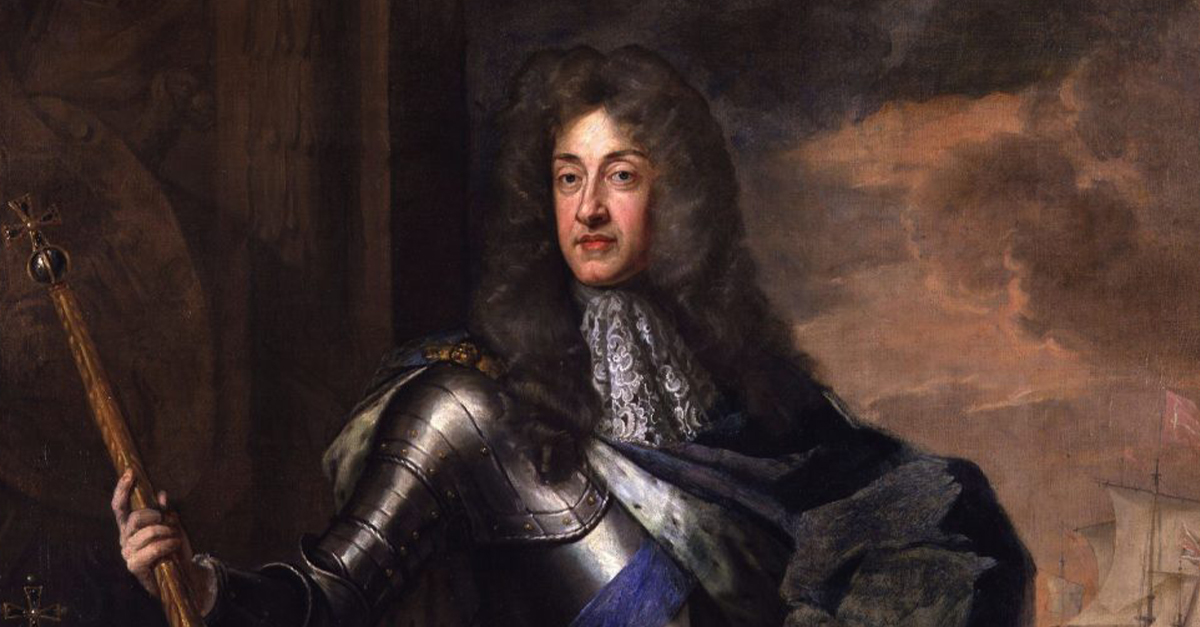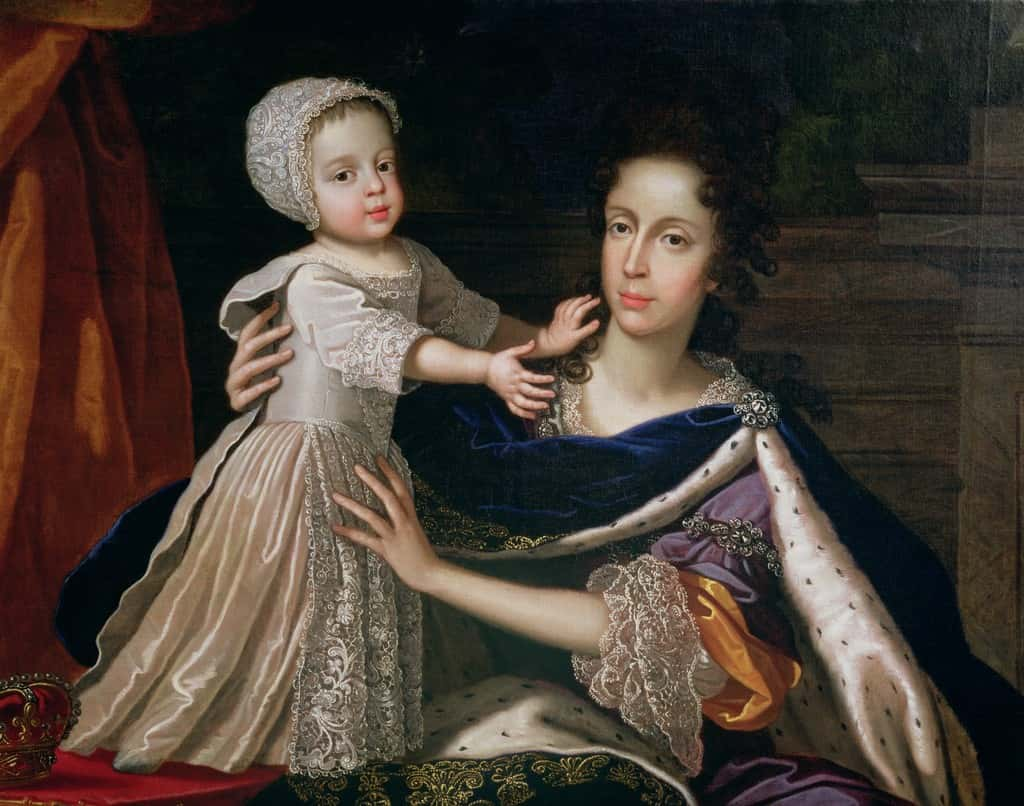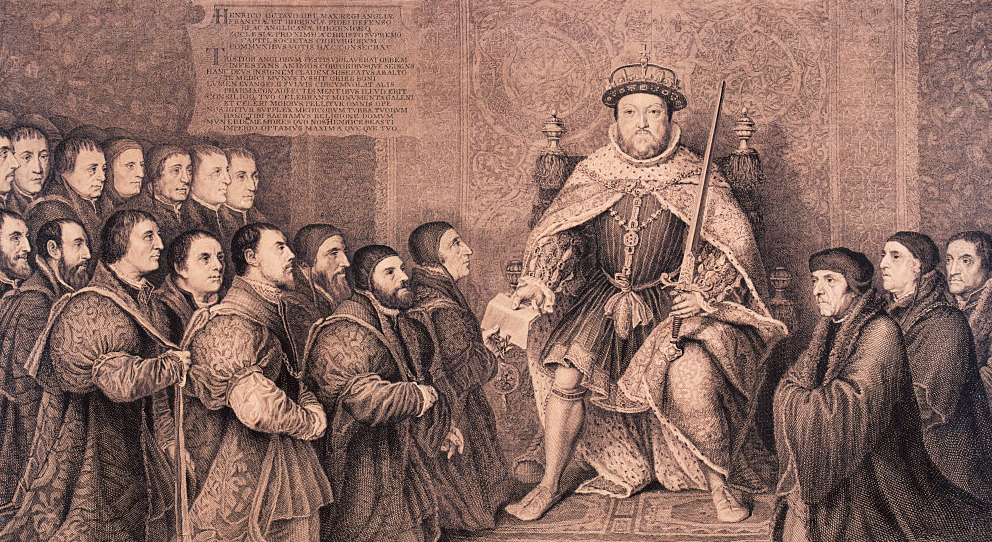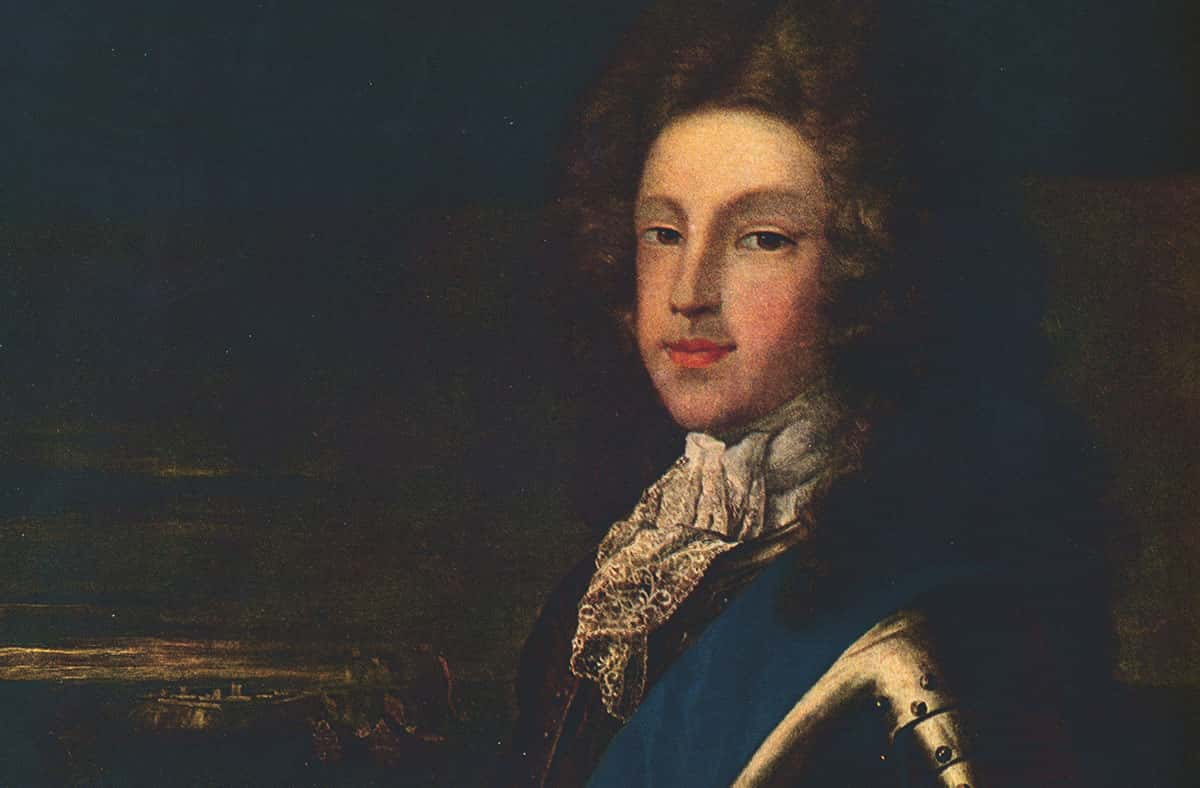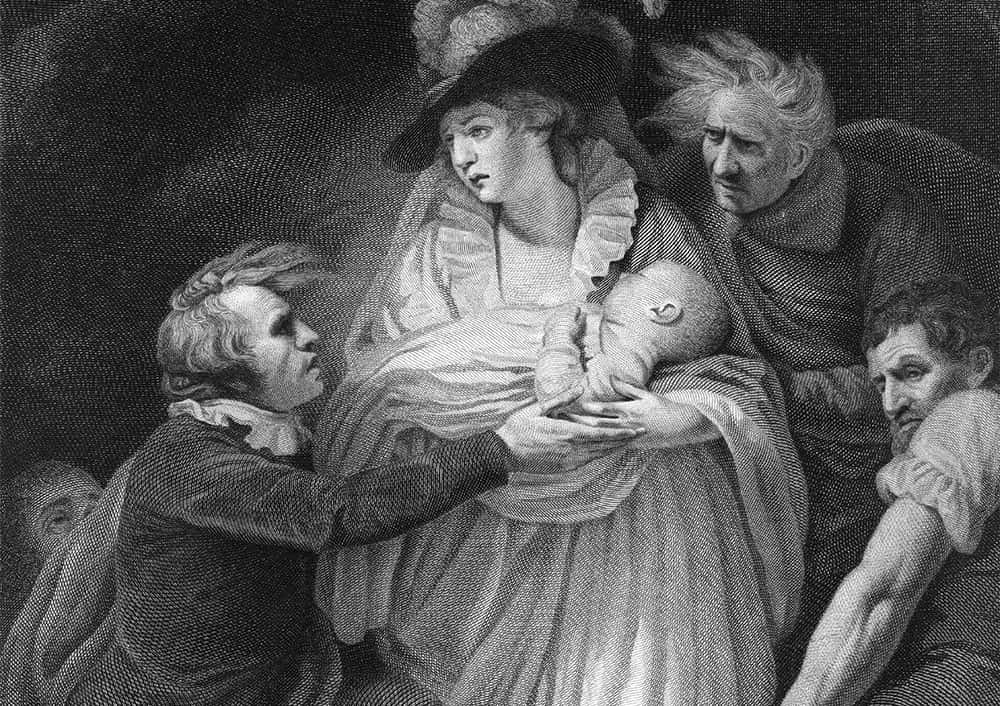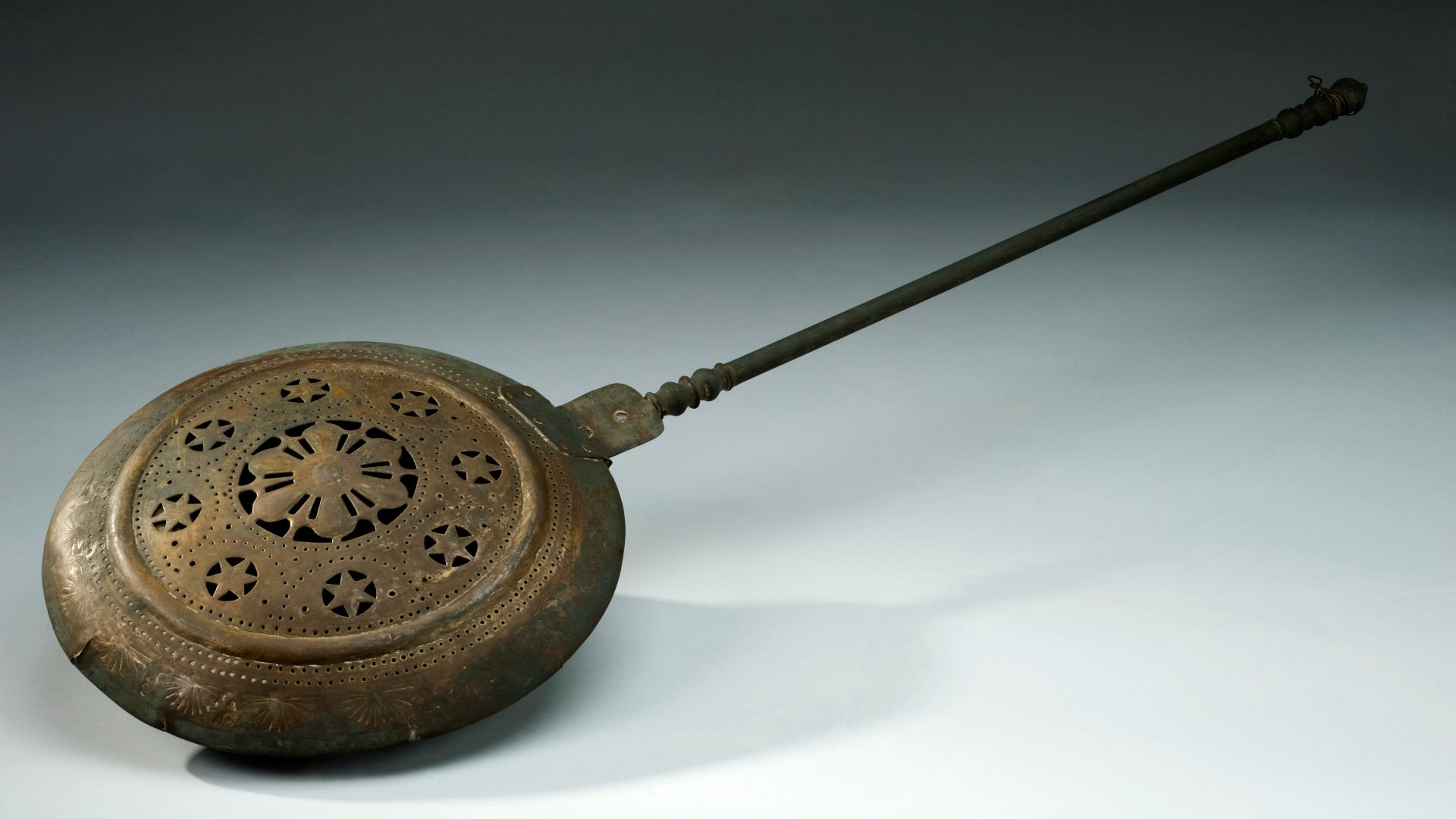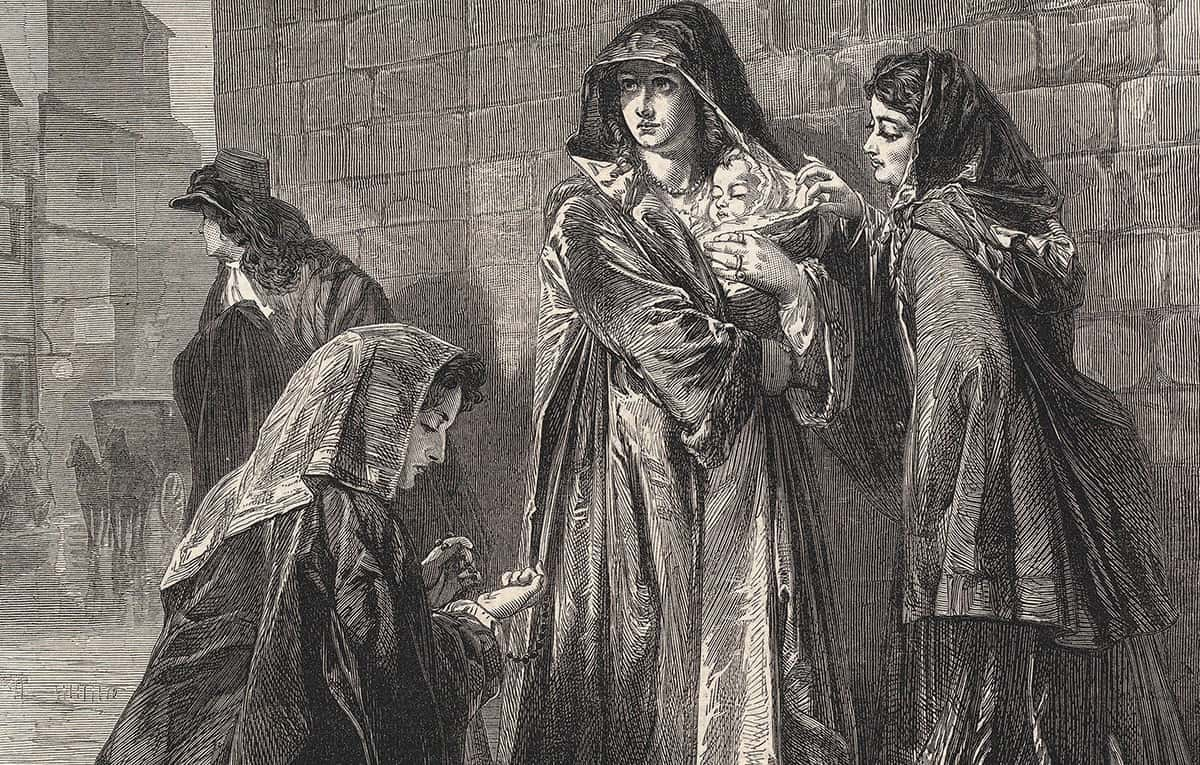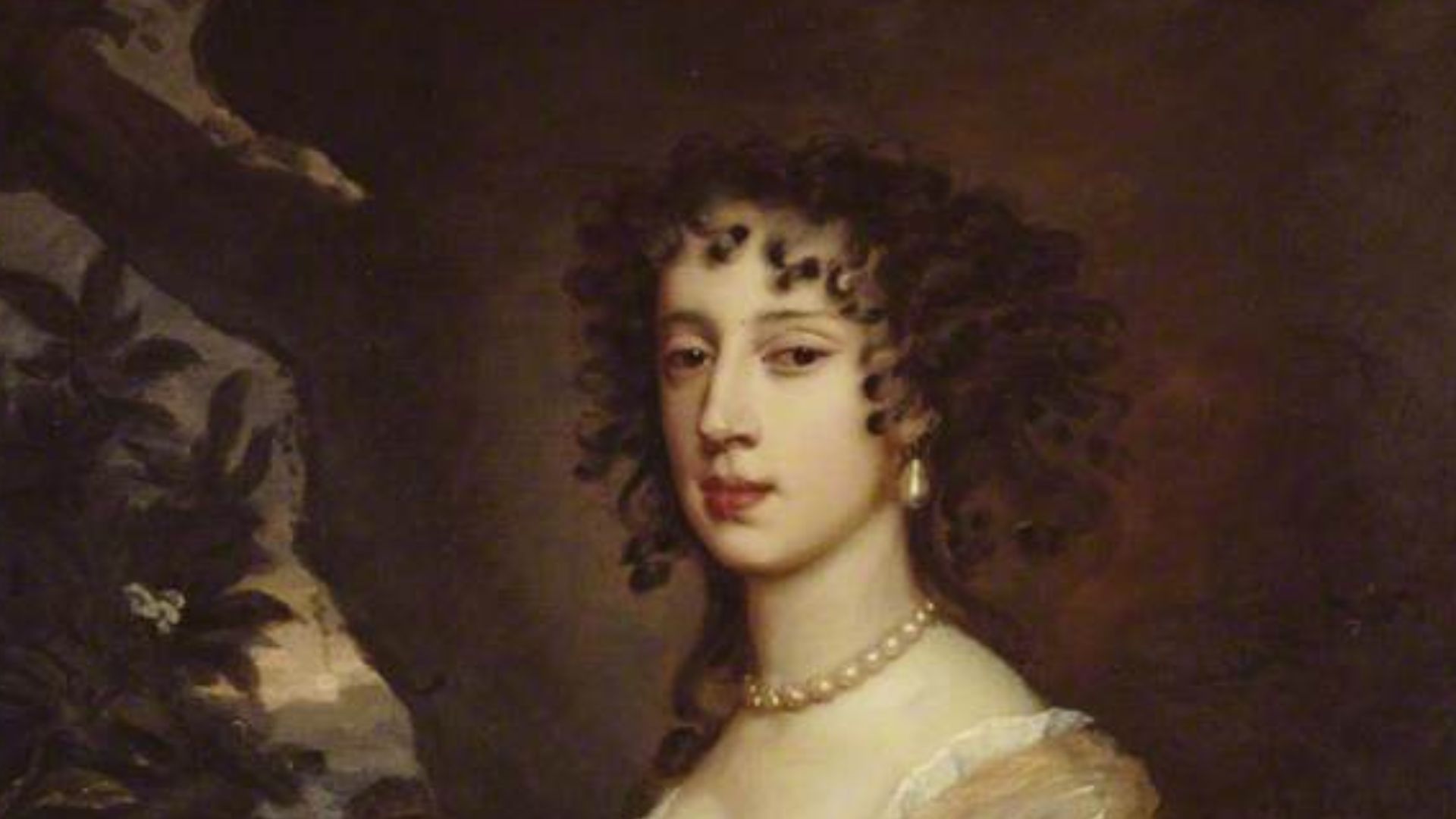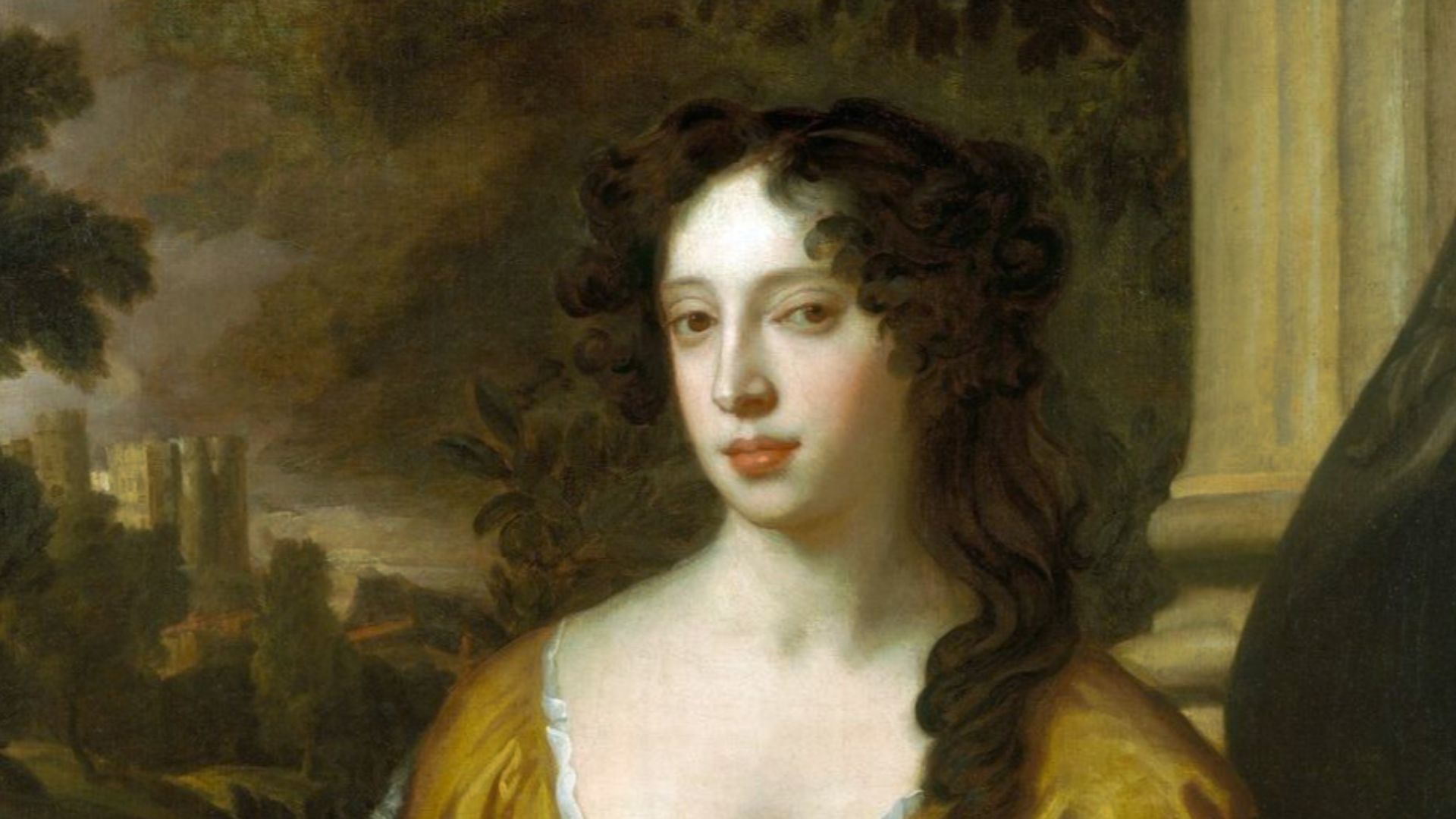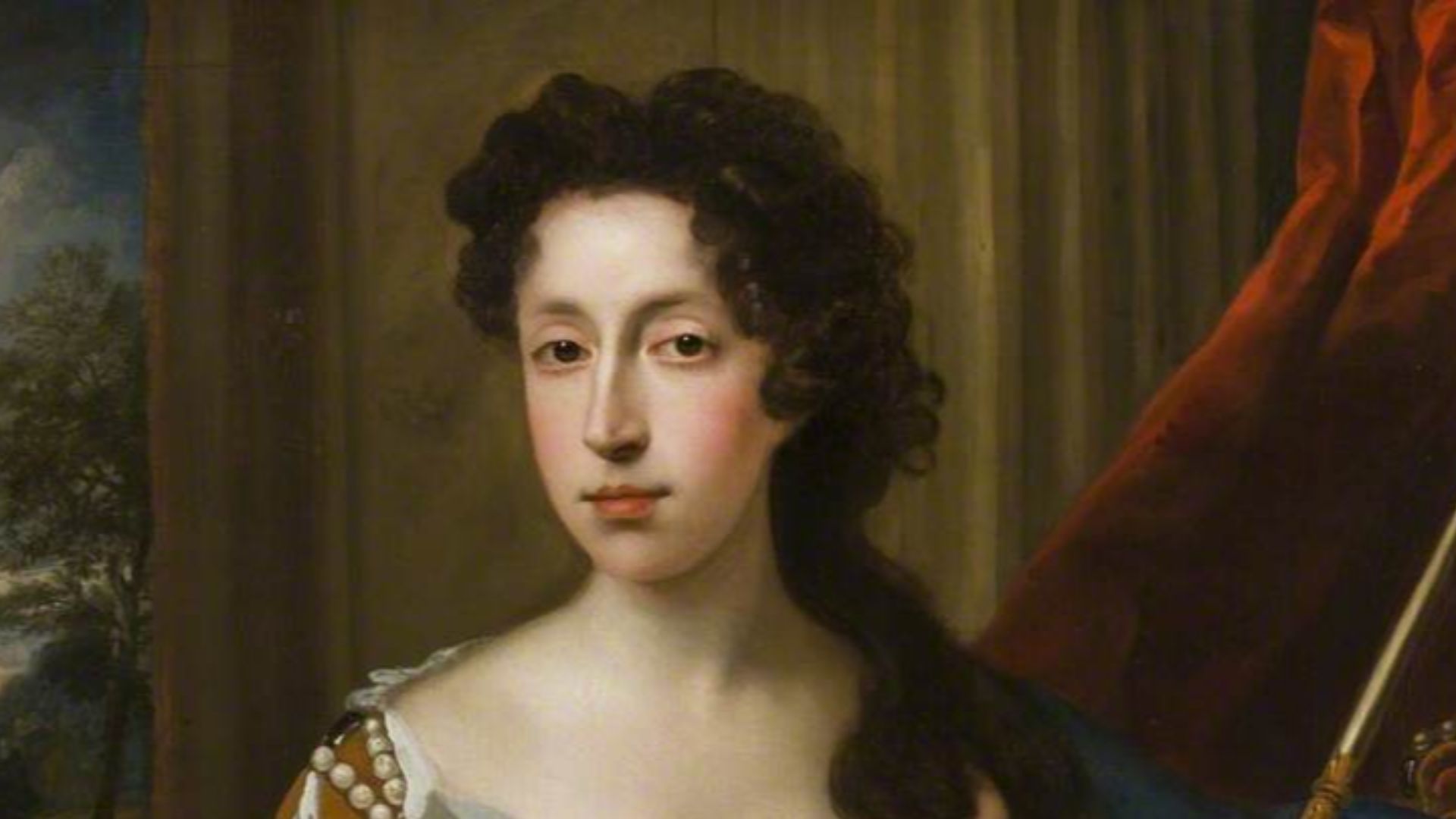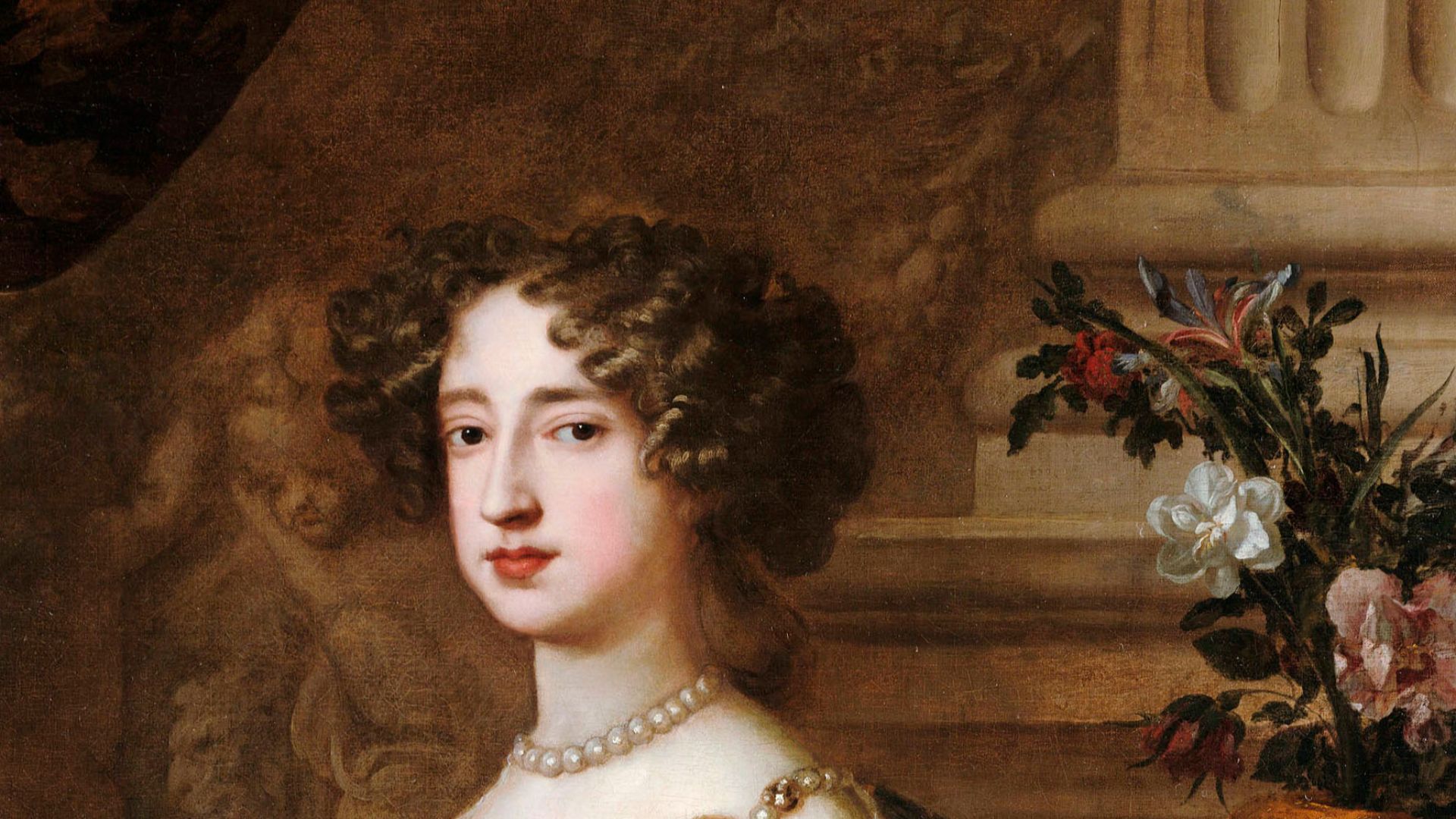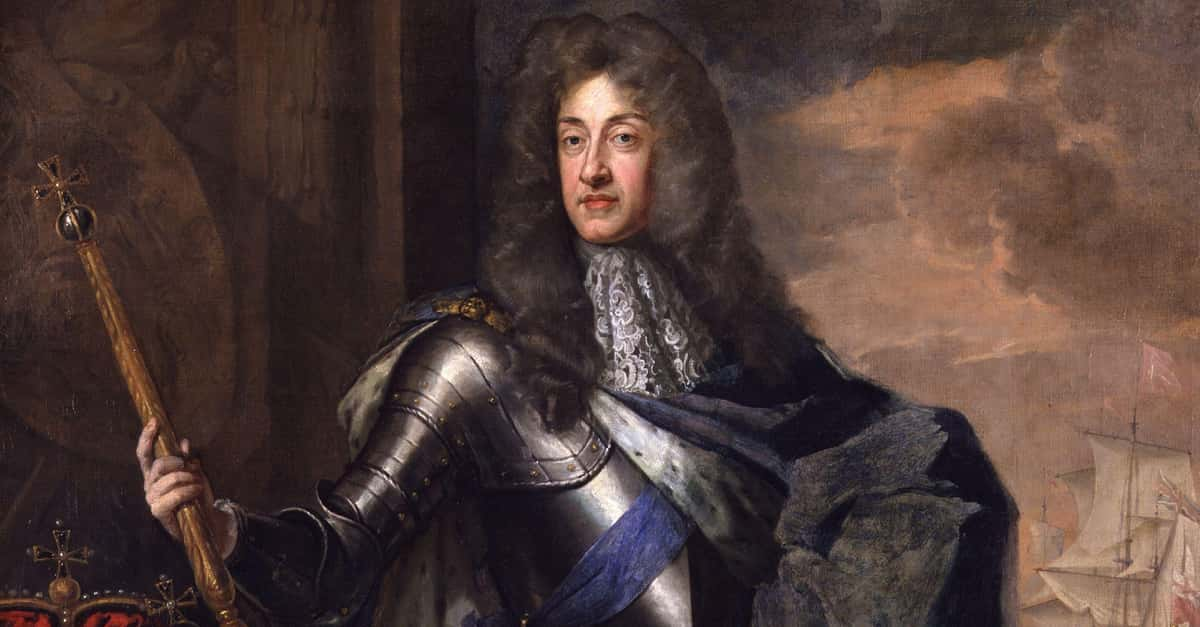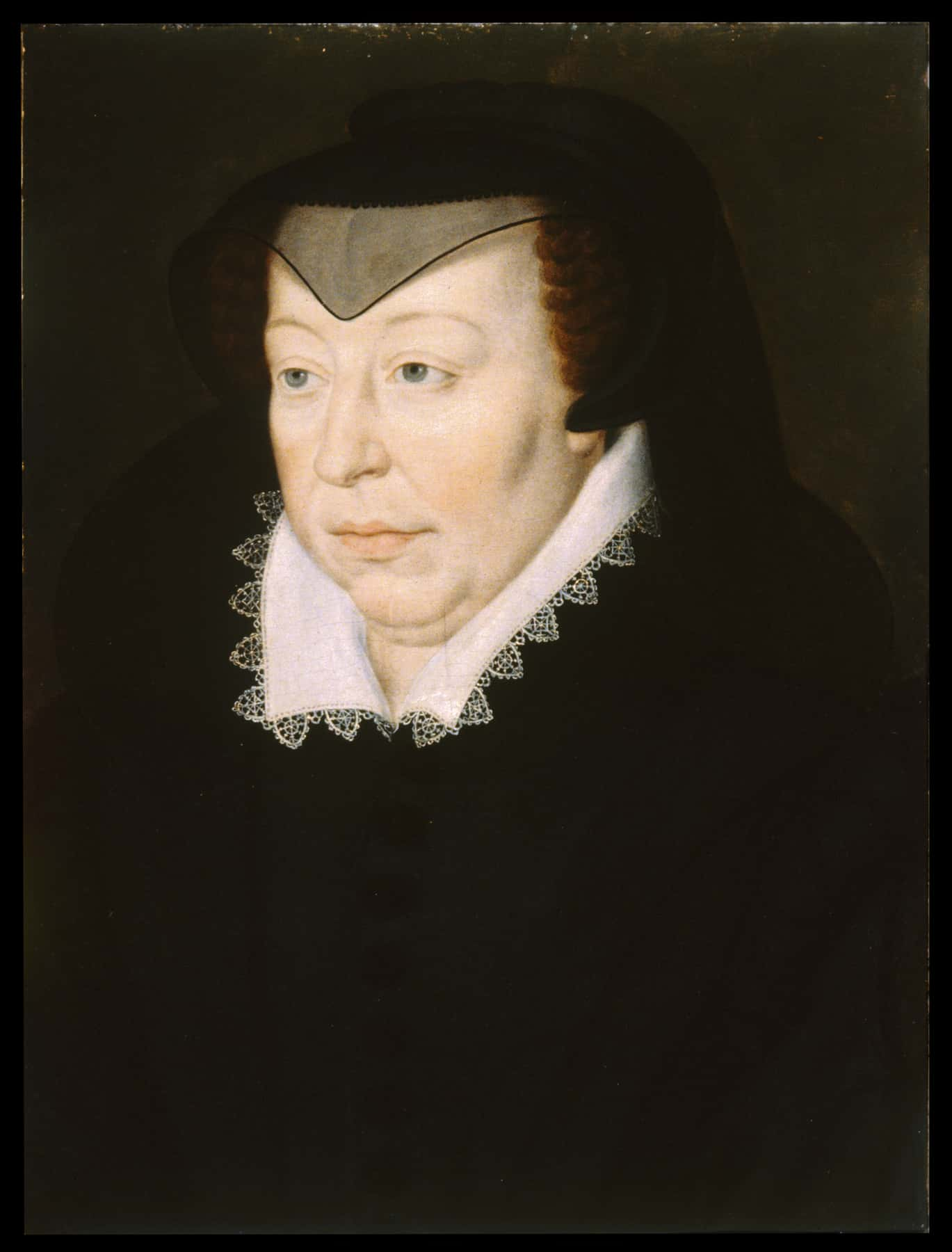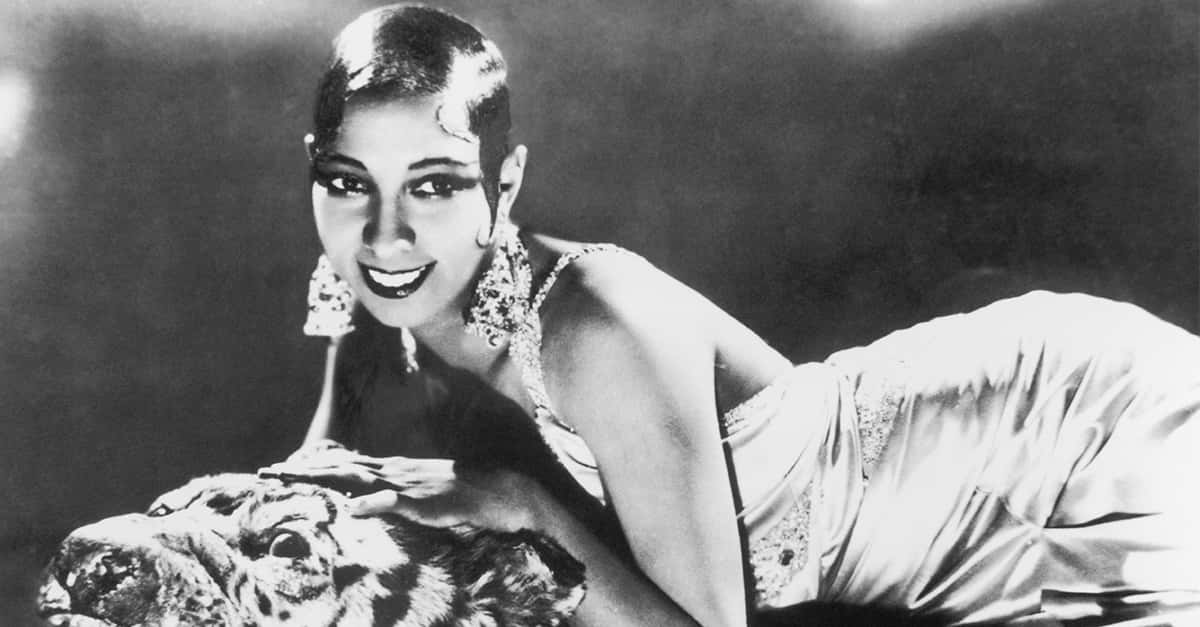#WarmingPanBaby
If you thought that the idea of “fake news” was a modern invention, have we got a story for you. Almost 400 years ago, in a world devoid of social media or, honestly, literacy, a monarch was brought down by a manufactured scandal.

James II And Mary Of Modena
King James II of England ruled Britain in the 1680s alongside his wife Maria Beatrice d’Este. The Queen was often referred to as Mary of Modena. Mary was James’s second wife, born a princess in Italy.
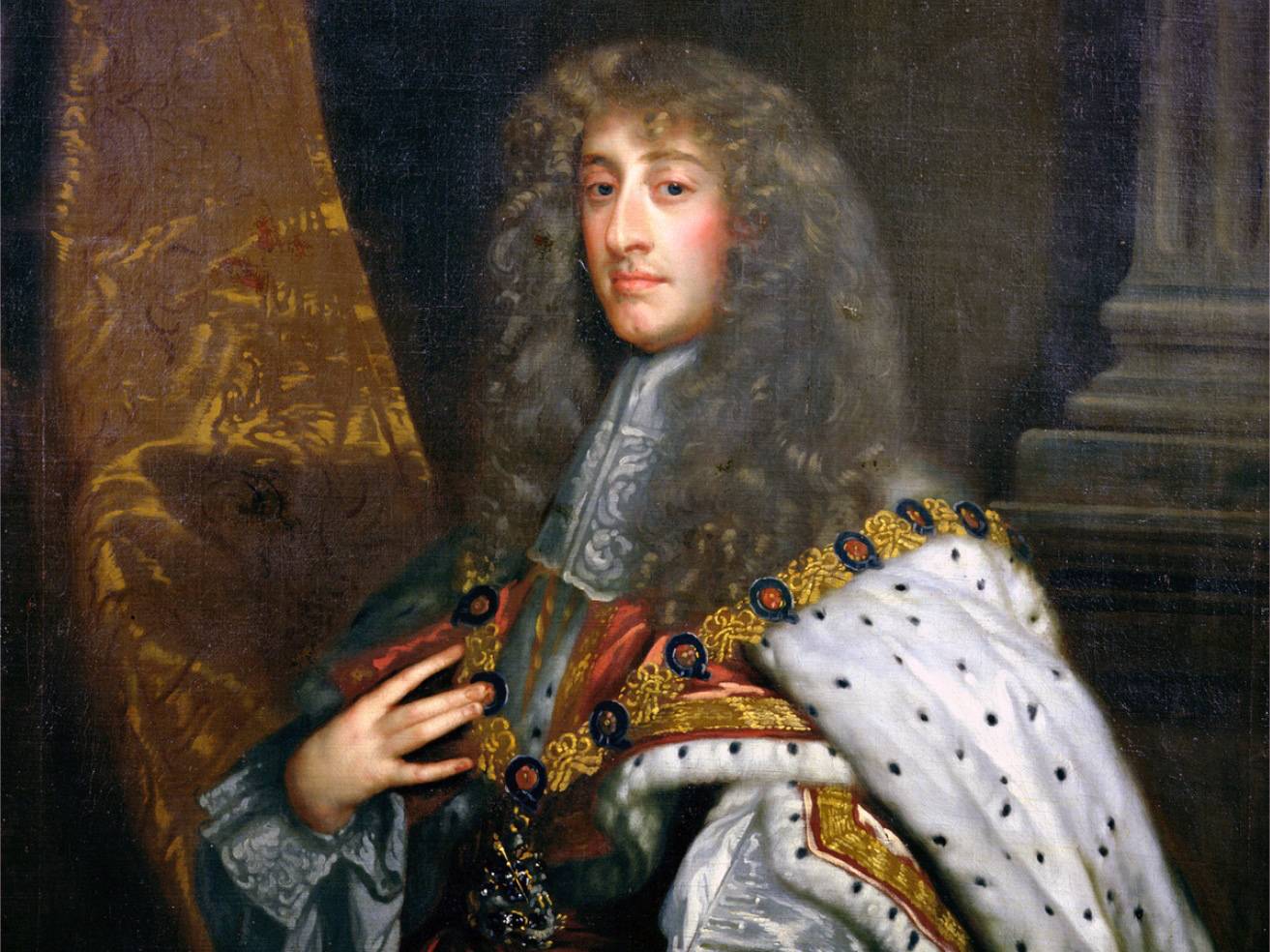 School of Peter Lely, Wikimedia Commons
School of Peter Lely, Wikimedia Commons
King Of England, Ireland, And Scotland
James was a somewhat authoritarian King, ruling over England, Ireland, and Scotland. His first wife, Anne Hyde, was the daughter of a commoner, and the two married in secret before their official ceremony in 1660. Anne passed away in 1671, and James married Maria in 1673.
 Adriaen Hanneman, Wikimedia Commons
Adriaen Hanneman, Wikimedia Commons
A Sad Birth Record
James and Maria, who was 15 at the time of their marriage, had tried before to produce an heir to the throne. Between 1674 and 1684, the couple lost 10 children, many of them stillborn. The longest surviving was Isabel, who died at age four.
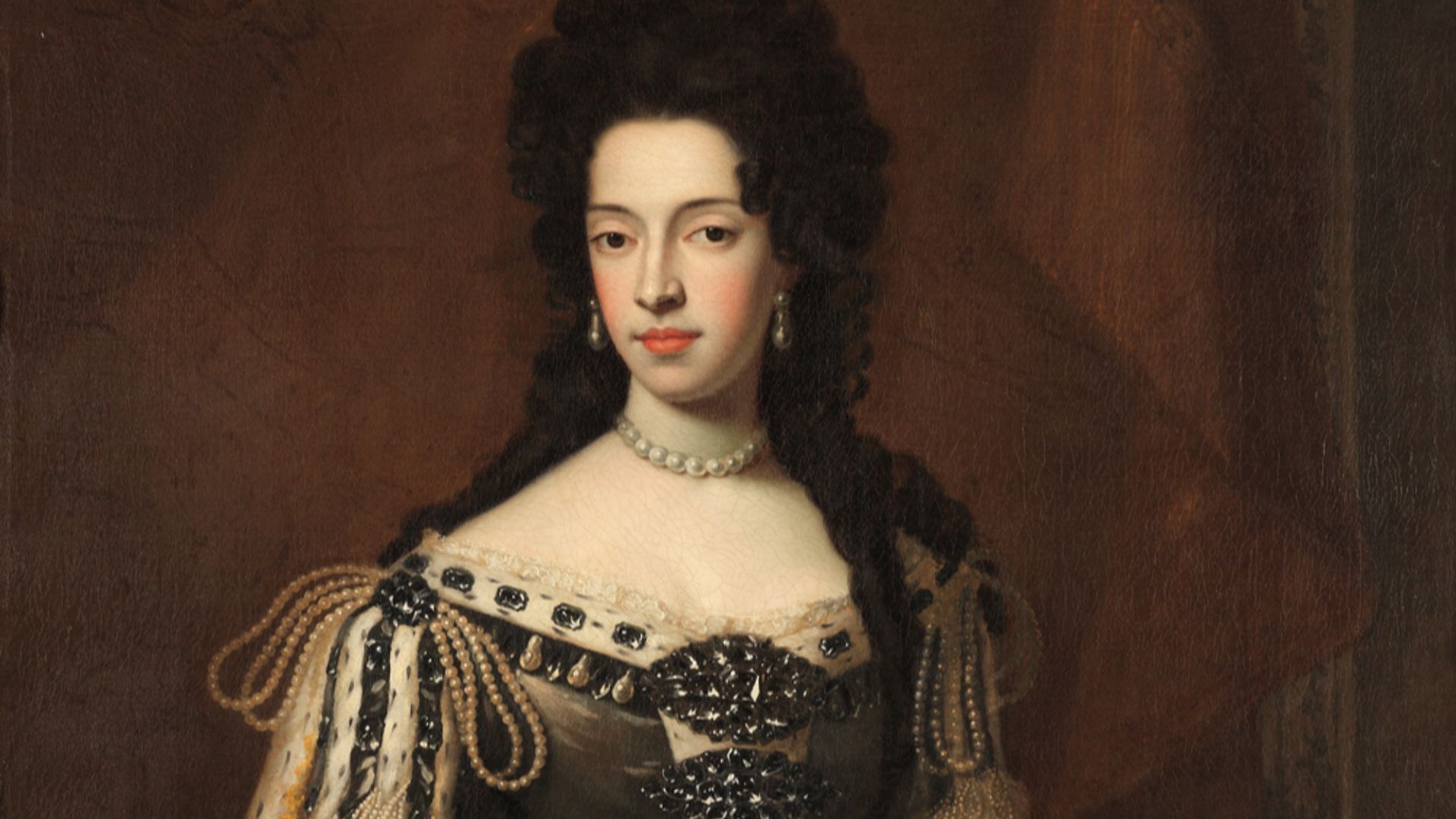 Godfrey Kneller and workshop, Wikimedia Commons
Godfrey Kneller and workshop, Wikimedia Commons
Old And Heirless
Okay, not exactly heirless. James had two daughters from his previous marriage to Anne Hyde. But a male baby was preferable at the time as a successor to the throne. And at the ripe old age of 55, hope for such a thing was fading.
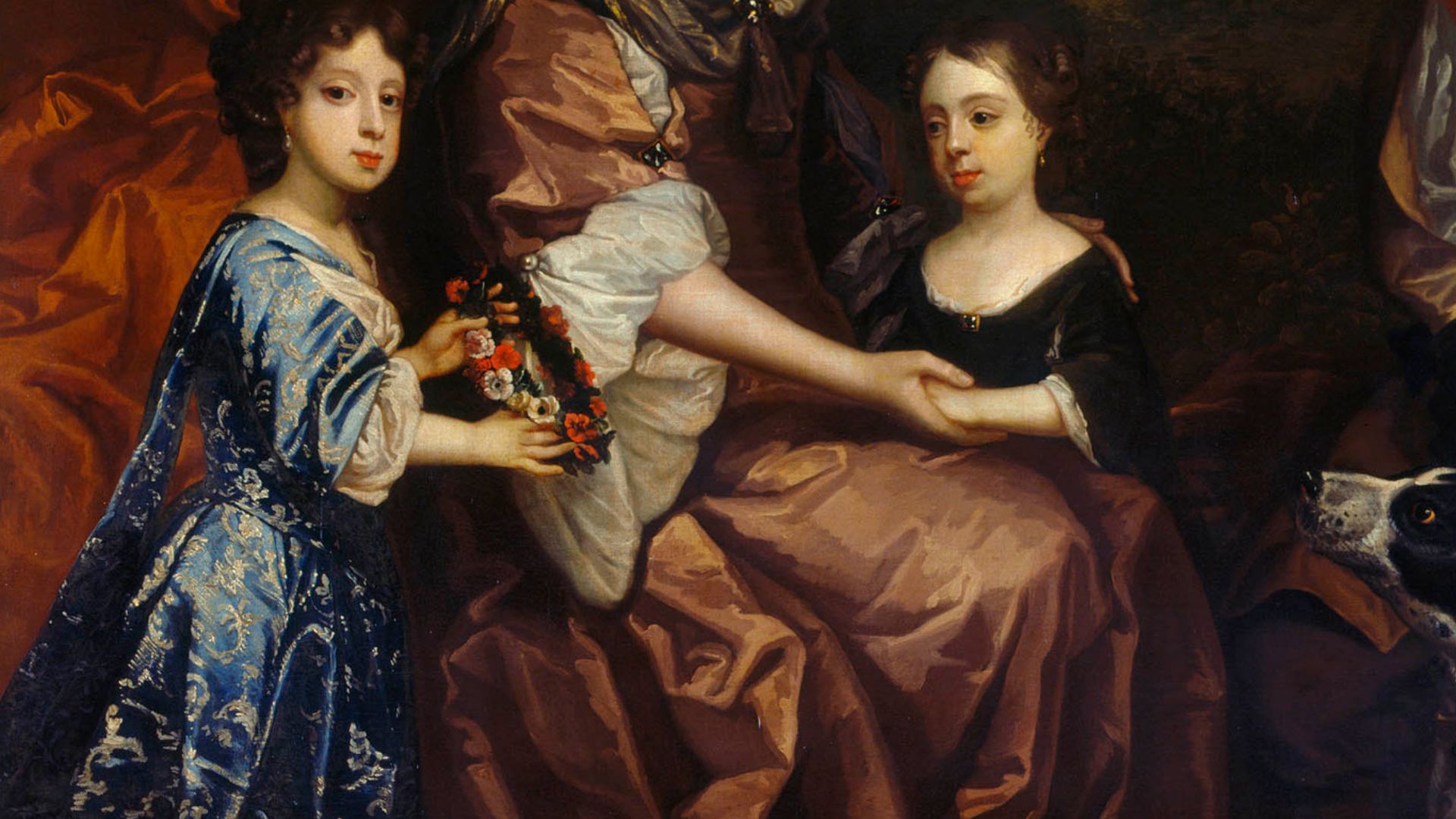 Peter Lely / Benedetto Gennari II, Wikimedia Commons
Peter Lely / Benedetto Gennari II, Wikimedia Commons
A Bouncing Baby Royal
So, it was quite a surprise when James Francis Edward Stuart was born on June 10, 1688. The male heir immediately moved to the head of the line of succession. And Britain, a country divided along religious lines, teetered close to another civil war.
Catholics And Protestants
To understand why this was the case, we have to look back to King Henry VIII. Infamous for the number of wives he had, Henry broke with the Catholic Church so that he could divorce his first wife, whom he had grown tired of.
 After Hans Holbein the Younger, Wikimedia Commons
After Hans Holbein the Younger, Wikimedia Commons
The Anglican Angle
Henry declared himself Head of the Church of England, giving himself both secular and spiritual power over the realm—and, basically, the ability to marry whomever he wished. Since that time, Catholics were looked upon with suspicion by many in the country.
Parliament Vs Monarchy
The British Parliament in the late 1600s was dominated by the Whigs, a group that opposed absolute monarchy and the Catholic line of succession. They were deeply in favor of Protestantism, and the new heir to the throne threatened their power and beliefs.
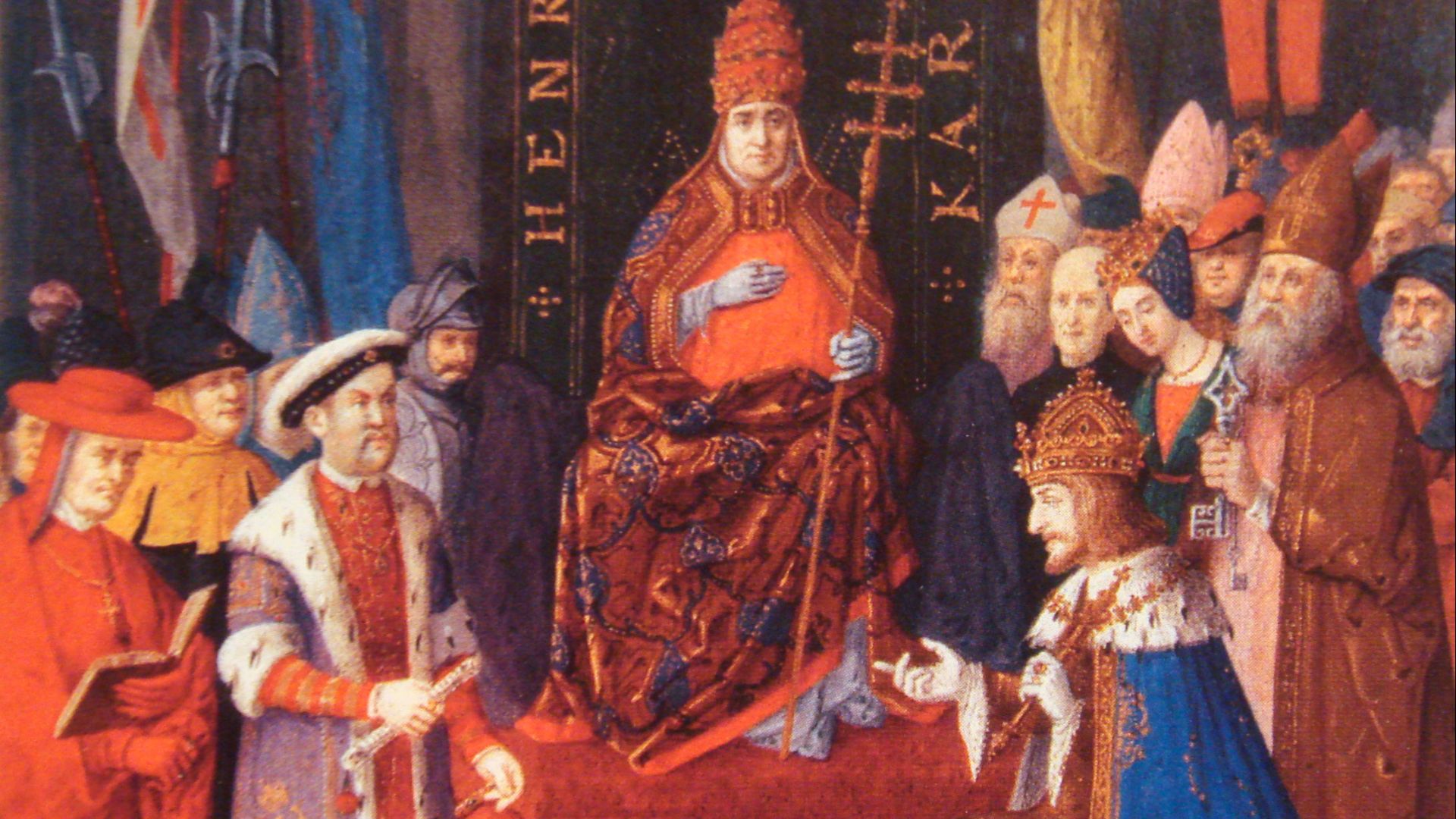 John Closterman (1660-1711), Wikimedia Commons
John Closterman (1660-1711), Wikimedia Commons

History's most fascinating stories and darkest secrets, delivered to your inbox daily.
William Of Orange
The Whigs began searching for a solution to their problem, and hit upon one in William of Orange. A Dutch noble, William had a claim to the British throne by both marriage and blood relation to former King Charles I. And, importantly for the Whigs, he was a Protestant.
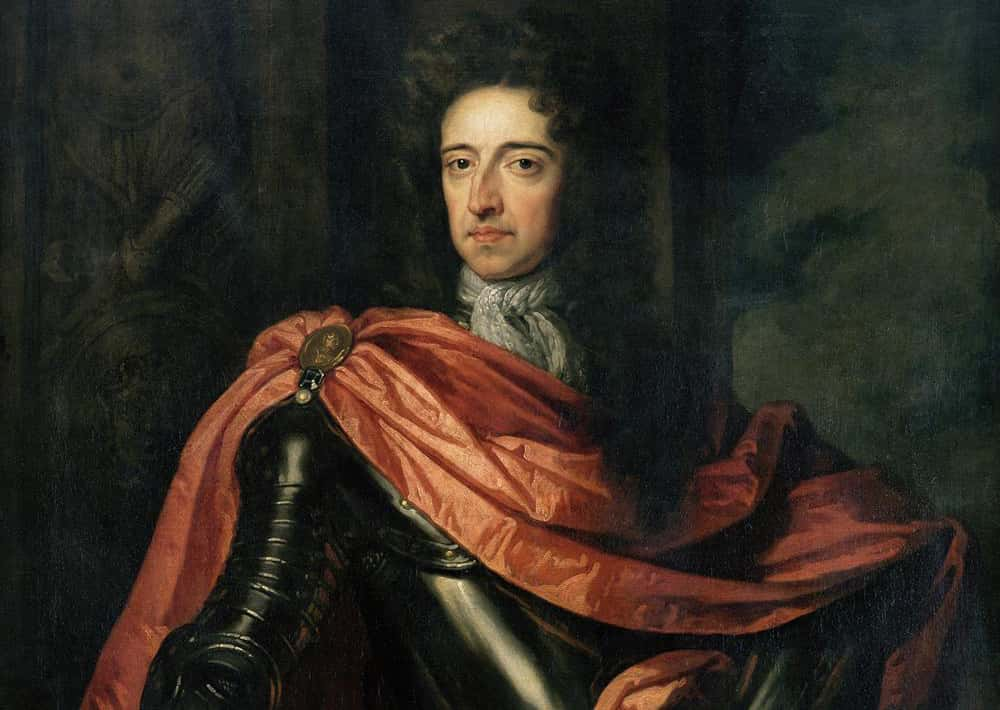 Godfrey Kneller, Wikimedia Commons
Godfrey Kneller, Wikimedia Commons
Fake News Of Old
The birth of baby James put the Protestants in a difficult position, so they did what any group looking to take power would: They made stuff up. Stories about the pregnancy ran rampant, all concocted as a way of denying the legitimacy of the new Catholic heir.
A Bogus Belly
Among the rumors that circulated about Maria was the idea that she was wearing a false belly throughout her supposed pregnancy. But if this was the case, how could the Queen possibly produce an heir at the end of her term?
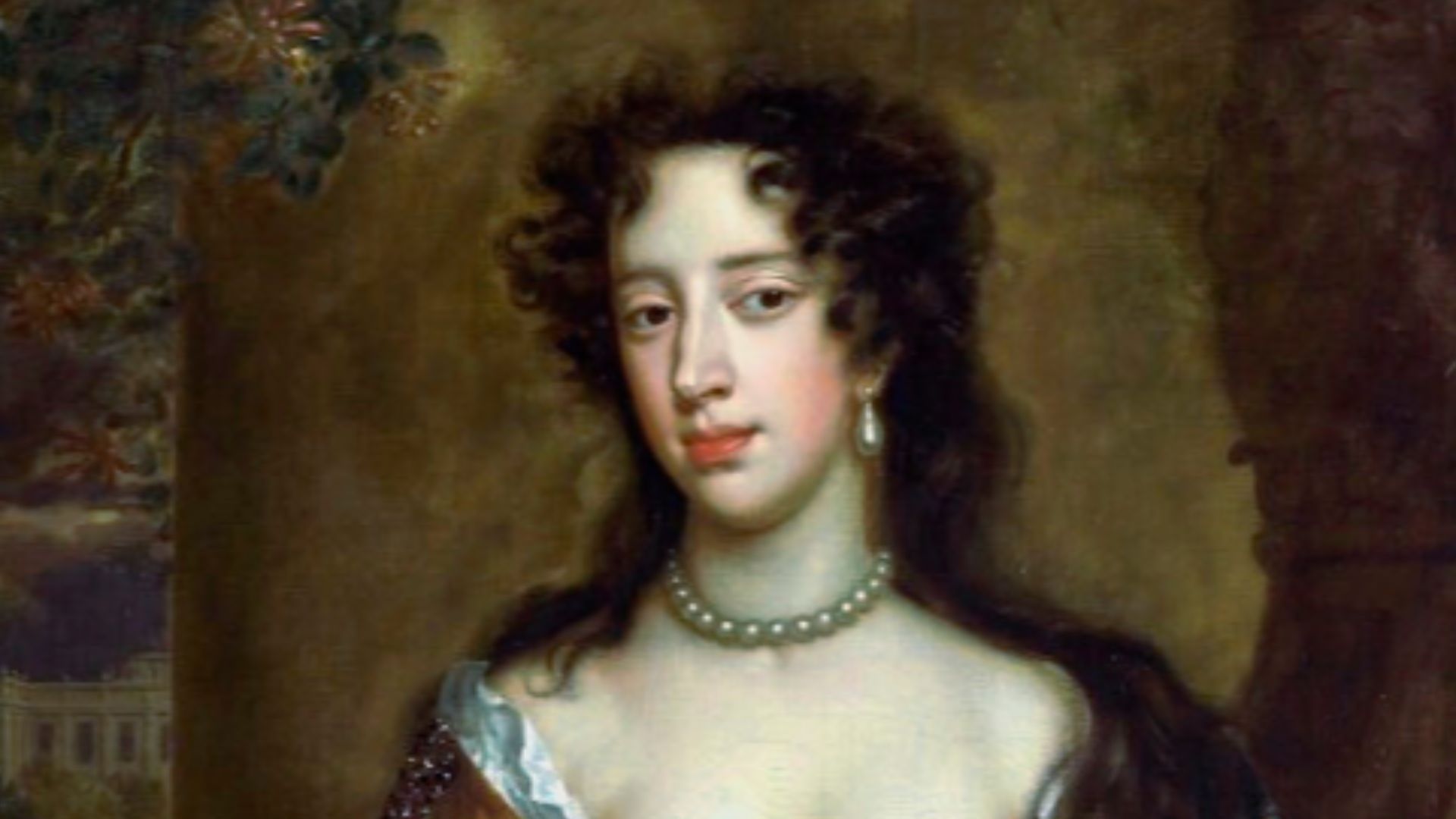 Willem Wissing, Wikimedia Commons
Willem Wissing, Wikimedia Commons
A Simulated Son
The outcome of this ruse would be somehow smuggling a changeling baby into the birthing chamber, an idea that would play a large part in toppling James’s rule. Such a child would have a claim to the throne despite, supposedly, having issued from someone else.
Gathered Gawkers
As the rumors abounded, James took the threat seriously. To prove to his detractors that the pregnancy was legitimate, he allowed a plethora of witnesses to be present for the birth of his child.
 Alexis Simon Belle, Wikimedia Commons
Alexis Simon Belle, Wikimedia Commons
Birth Witnesses
If that sounds bizarre to you, bear in mind that such birth witnesses were a common practice for royal pregnancies. As late as 1936, the British Home Secretary attended royal births, though the practice ended in 1948.
Testimonies
Every man and woman present for the birth of James Stuart gave a sworn testimony that the birth was legitimate. These testimonies were presented a few months after the baby’s birth, and seemed to put to rest any rumors that the birth was illegitimate.
 Francis Sandford, Wikimedia Commons
Francis Sandford, Wikimedia Commons
Margaret Dawson’s Testimony
And then the Williamites, who supported the Protestant William of Orange, found a detail in the testimony of midwife Margaret Dawson that brought down the King. According to Ms Dawson, a warming pan had been brought for the Queen to help her with her discomfort during the birth.
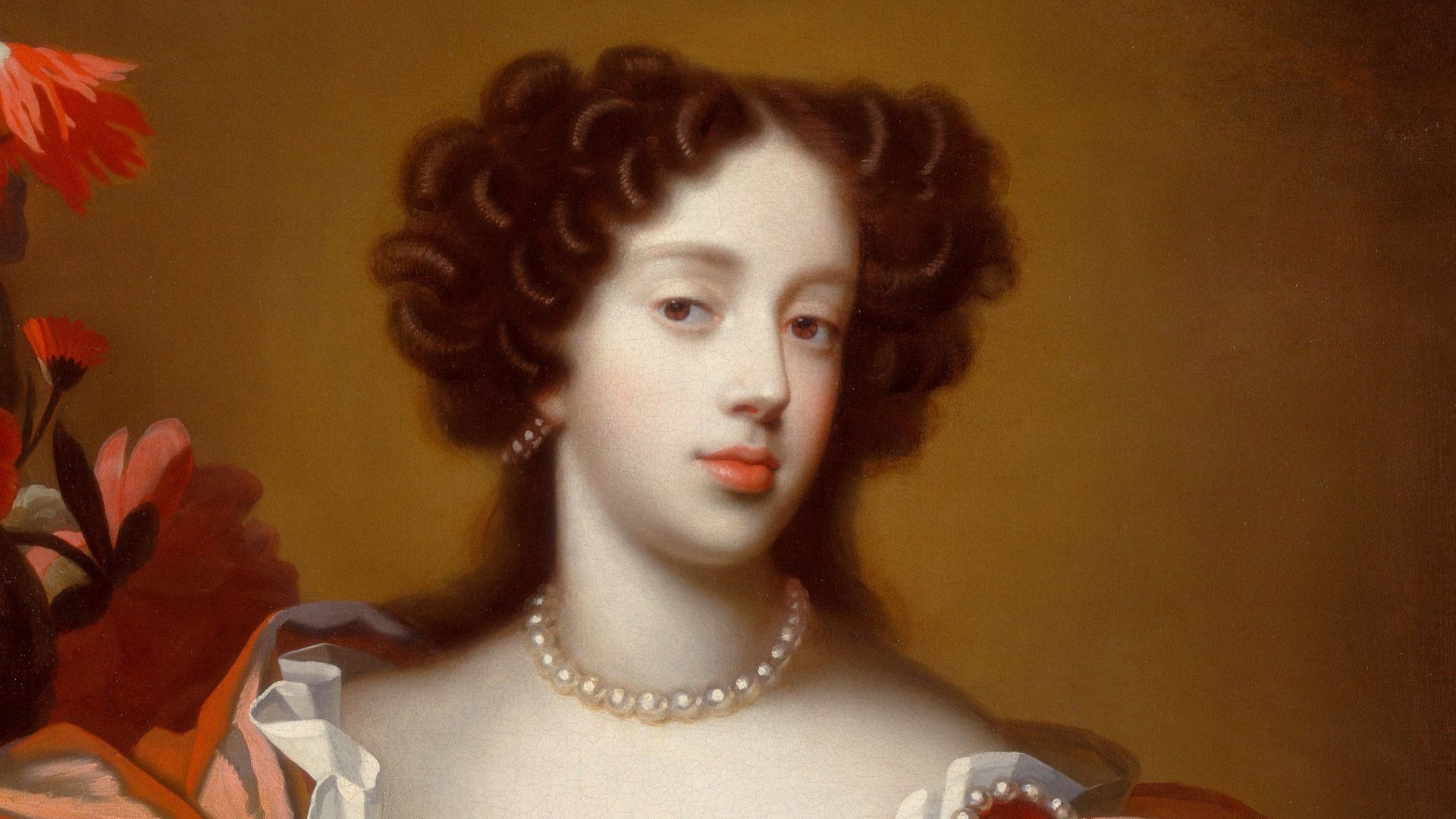 Simon Pietersz Verelst, Wikimedia Commons
Simon Pietersz Verelst, Wikimedia Commons
But Wait… What’s A Warming Pan?
For those who have never heard of such a thing, here’s the short version. A warming pan, or bed warmer, was a metal container with a long, wooden handle, that would hold coals and embers from a fire.
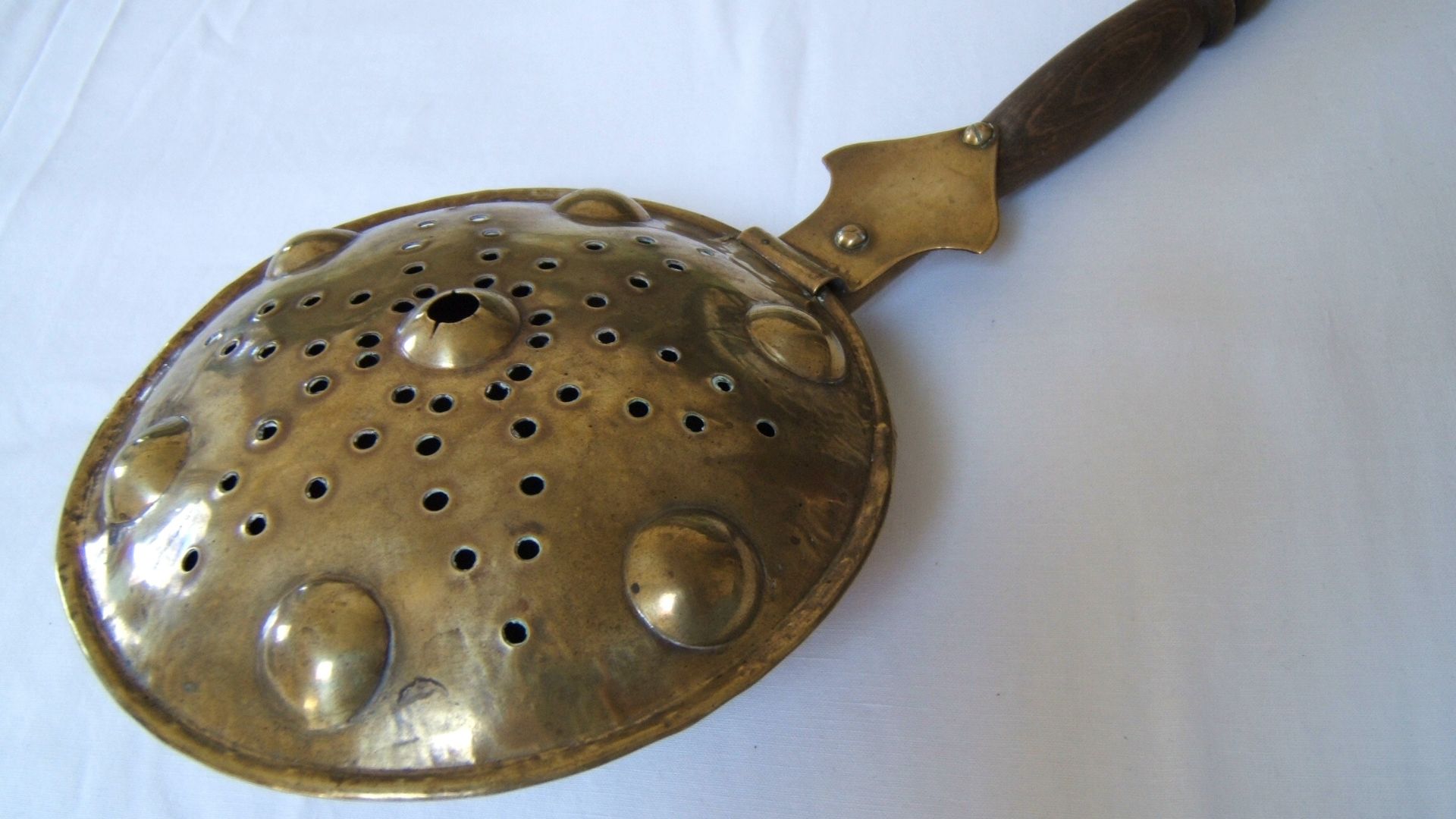 Algont at Dutch Wikipedia, Wikimedia Commons
Algont at Dutch Wikipedia, Wikimedia Commons
Cold European Nights
While not always frigid, the climate in Britain and Europe definitely meant there was a need for heating technologies. Despite being something of a fire hazard, warming pans were placed under covers in cold climates to warm up a chilly bed.
The Miller’s Baby
And thus, the Warming Pan Scandal was born. What if, suggested the Williamites, a baby was smuggled under the Queen’s covers, in this warming pan? From this question, the rumor of an unnamed miller’s baby being named heir to the throne became a national scandal.
 Possibly Alexis Simon Belle, Wikimedia Commons
Possibly Alexis Simon Belle, Wikimedia Commons
All The Reason William Needed
William of Orange took the rumor and ran with it. The idea that an illegitimate commoner might sit on the throne of England was all the reason the Protestant Dutchman needed to invade the country and “rescue” the land from the lying Catholic King.
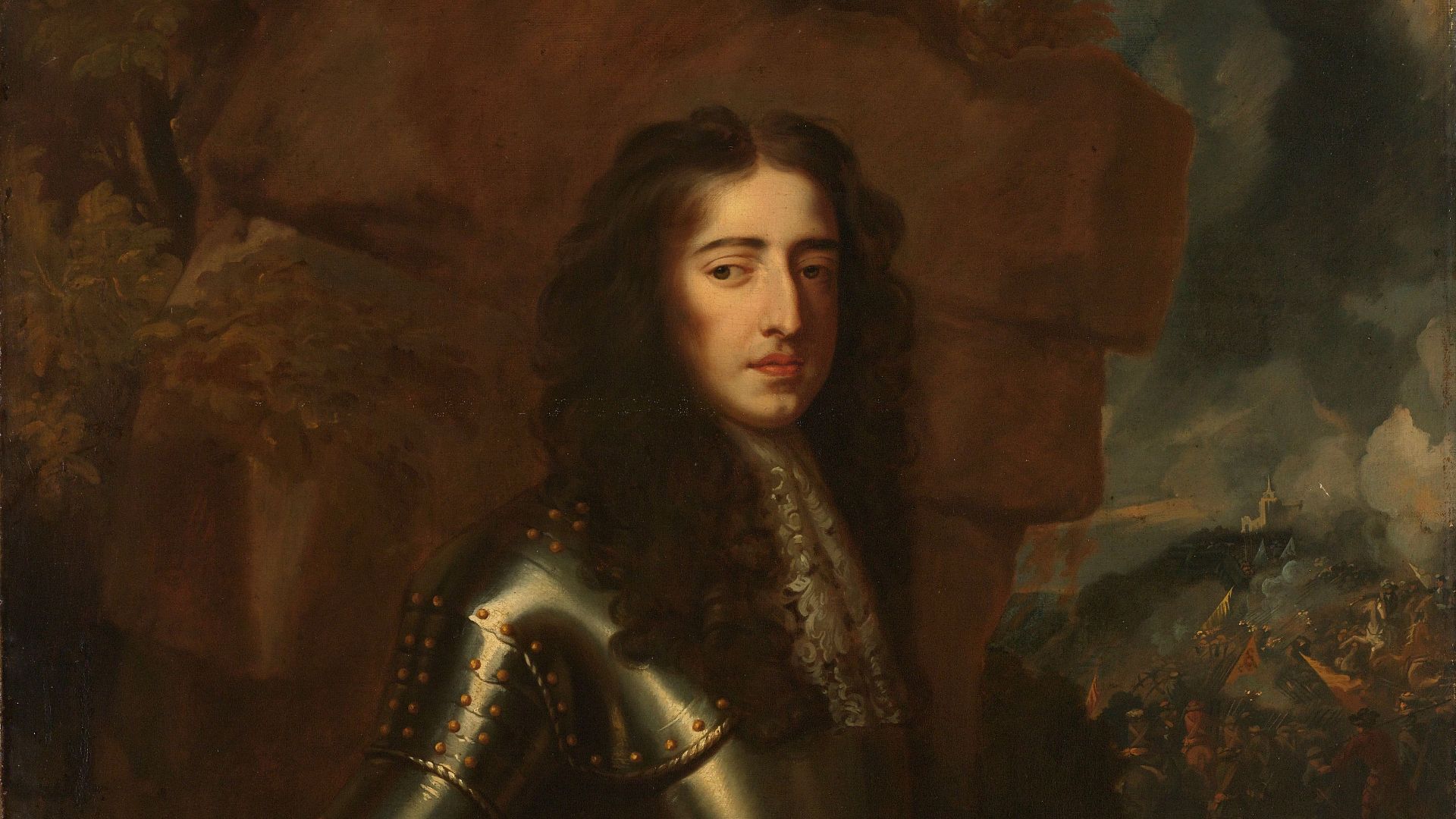 AnonymousUnknown author, Wikimedia Commons
AnonymousUnknown author, Wikimedia Commons
A Legitimized Invasion
But to rule a people, William could not appear to be a conqueror. The Dutch prince courted politicians and nobles, hoping to garner the support of the people of England, and their belief in the rightness of his actions.
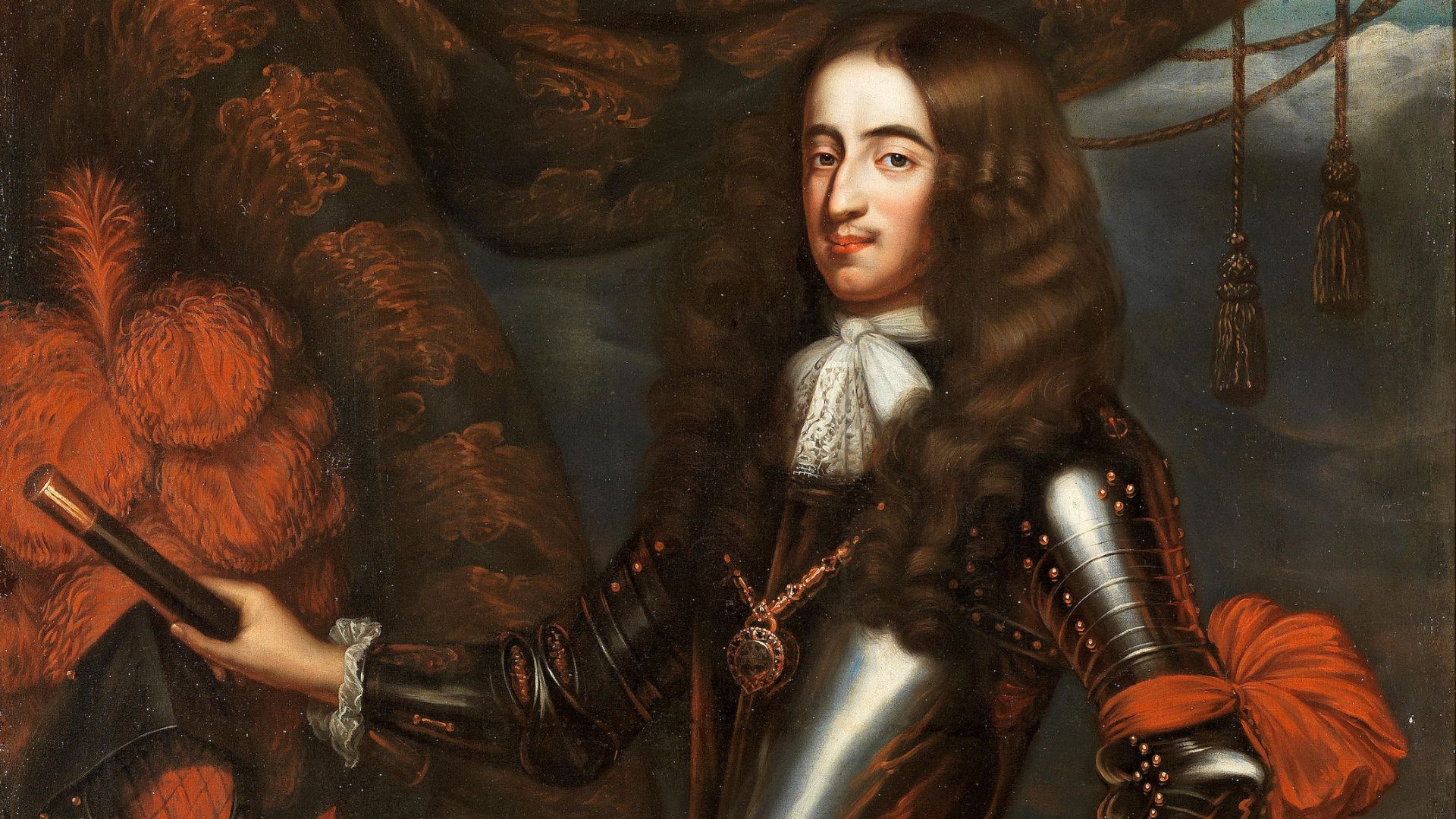 Circle of Jan de Baen, Wikimedia Commons
Circle of Jan de Baen, Wikimedia Commons
Not Just Weapons Of War
While William had an impressive military, he needed other tools to prove the legitimacy of his actions. And remember, he didn’t have instant social media to spread his disinformation. But he had the next best thing: the Dutch free press.
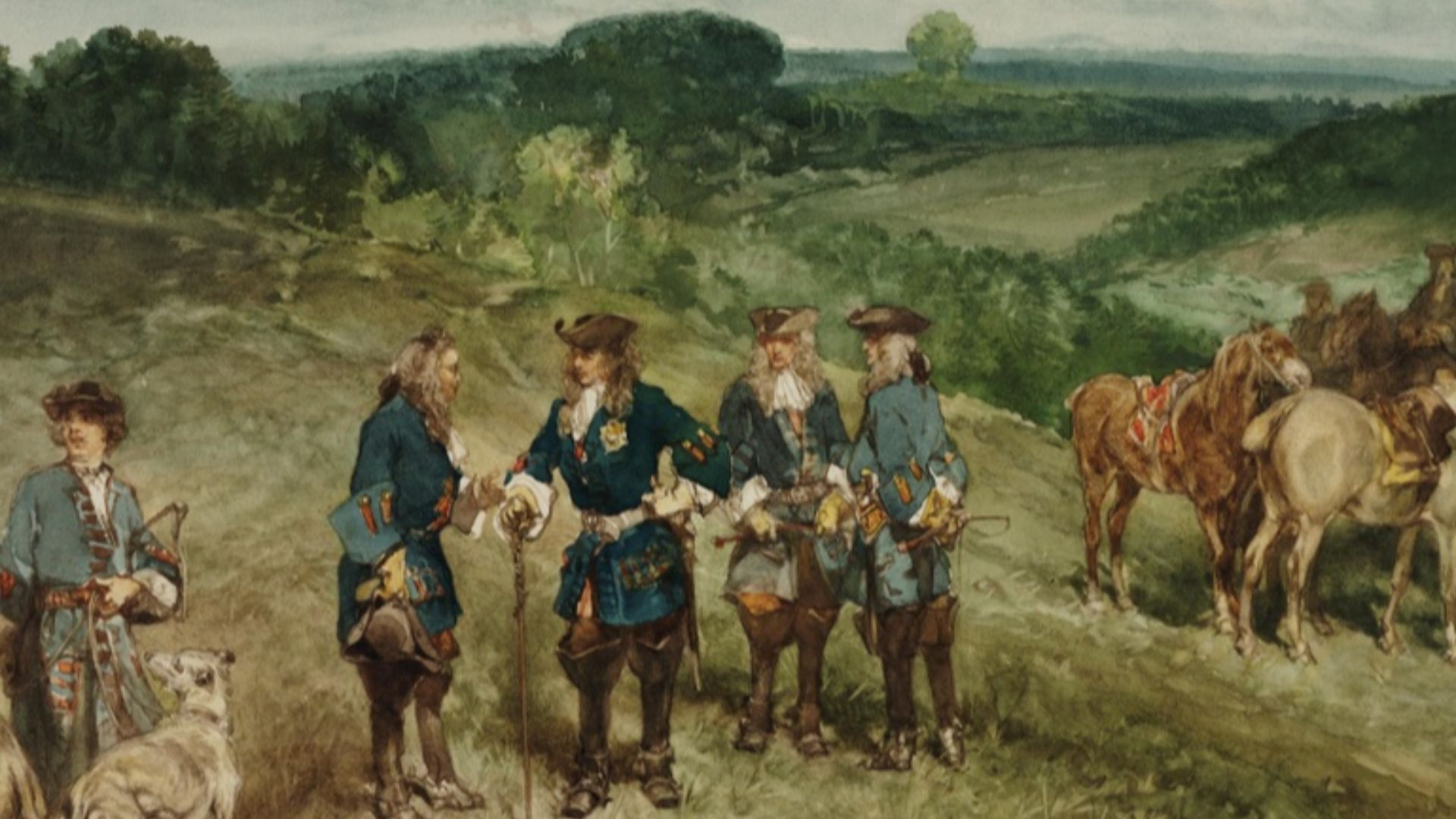 Charles Rochussen, Wikimedia Commons
Charles Rochussen, Wikimedia Commons
Birth Announcements
We still have birth announcements nowadays, but they are mostly photographs accompanied by a small passage describing the birth. But in the 17th Century, not that many commoners could read, so birth announcements appeared as portraits of mother and child looking happy and royal.
Enter The Rumor (Wind)Mill
With the warming pan rumors fanning the flames, the Dutch press started running even more scandalous rumors about Maria and her supposed son. Though the warming pan was the most popular rumor, stories of a hidden door in the birthing bed also questioned the baby’s legitimacy.
The Infamous Picture
As we noted, literacy was not as high in the 17th Century as it is now. So, visual media, and a famous print from the late 1680s, parodied a royal birth announcement and suggested that Maria was neither the child’s mother nor a respectable Queen.
Not Just A Toy
The picture showed the Queen sitting next to the crib of her newborn son. While both Queen and Prince appear happy and content, in the child’s blankets is a toy windmill. The inclusion of this toy was meant to suggest that the child was, in fact, a miller’s son.
The Edward Petre Rumor
Then there was Edward Petre. Leaning over the Queen’s shoulder, a little too close for comfort, was a sinister-looking figure meant to represent one of King James’s inner circle: Jesuit Catholic priest Edward Petre. And he was not well-liked by the British public.
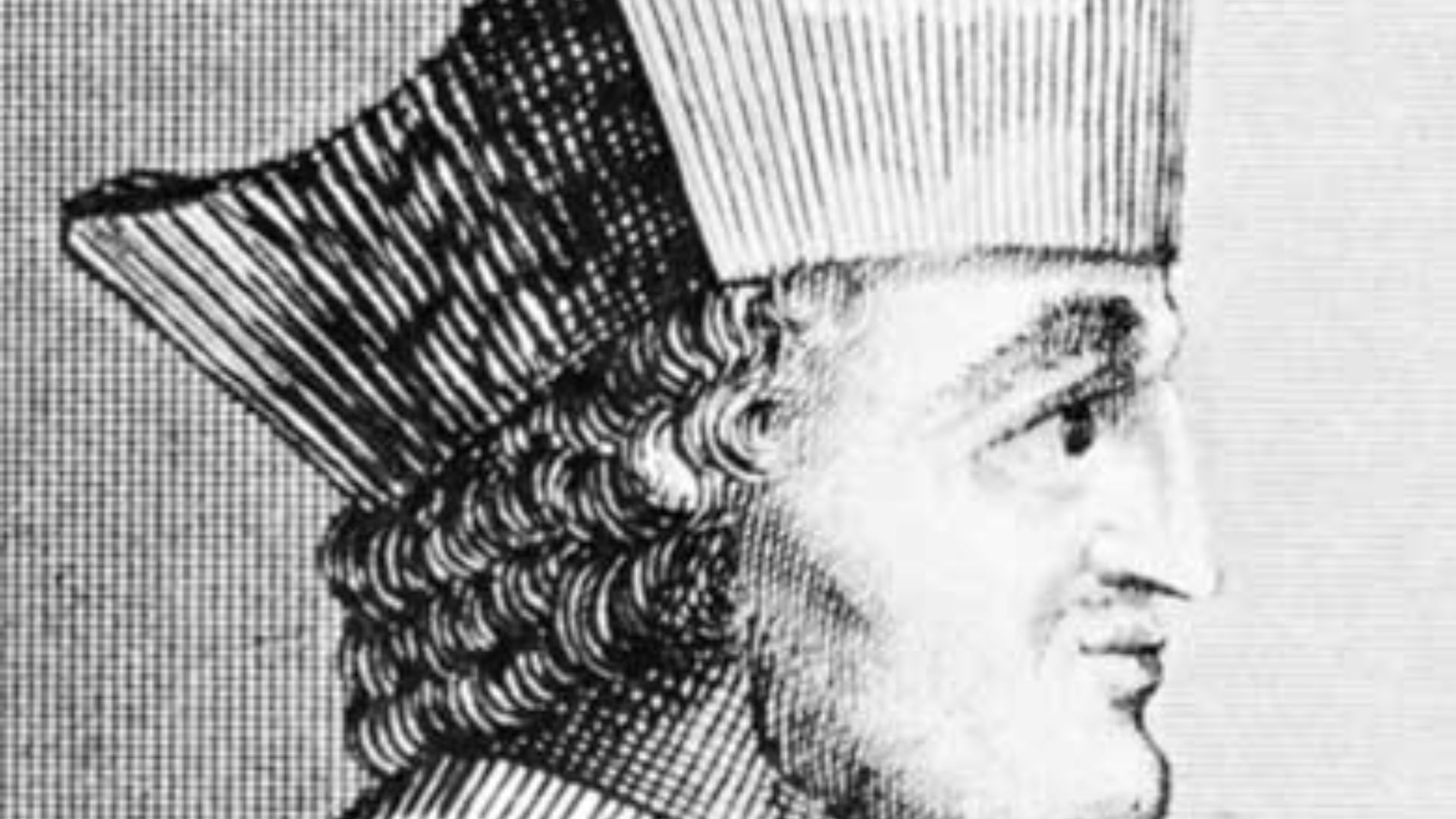 Adam sk~commonswiki, Wikimedia Commons
Adam sk~commonswiki, Wikimedia Commons
Rumor Upon Rumor
Stories flew about that Petre was the mastermind behind the fake pregnancy and false Prince. Worse, given that testimony seemed to show that the Queen was actually pregnant, rumors abounded that Petre was the father, and that Maria had been having an affair with the hated priest.
A Quiet Queen
All of which could not have been easy on poor Maria. The Queen was, by many accounts, a quiet and honest soul who loved her husband despite the fact that he carried on numerous affairs during their time together. Now everything about her, and her body, was being used as a tool to overthrow James.
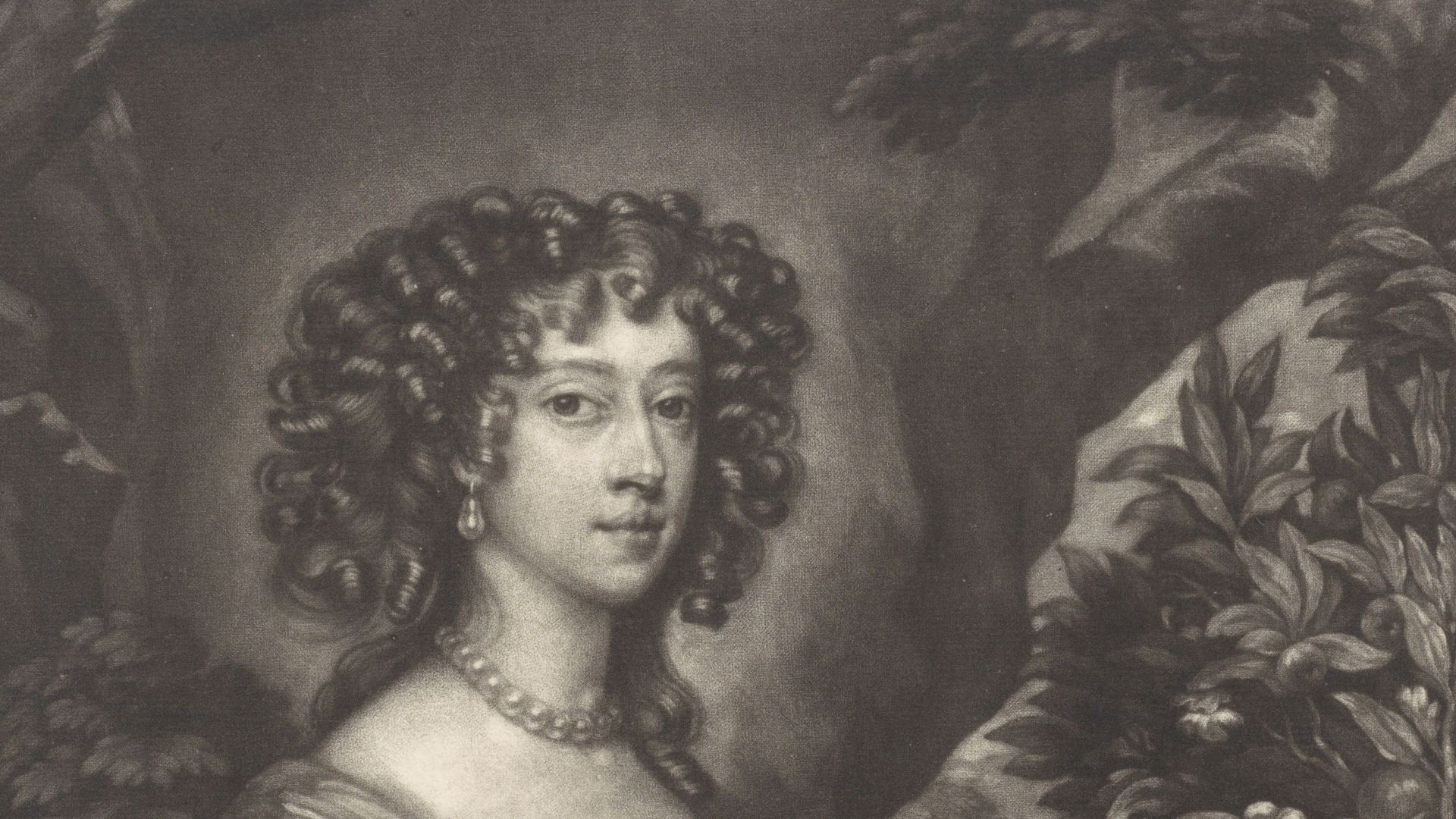 Rijksmuseum, Wikimedia Commons
Rijksmuseum, Wikimedia Commons
Body As Battleground
Maria’s struggles to produce an heir were common knowledge. The royal couple’s previous two children had died very early, hence the hope that William’s claim to the throne would end the Catholic dynasty.
The Stepdaughters
Sadly, though Maria had always been friendly to them, James’s daughters from his previous marriage came to support the rumors of the false birth. Princess Anne put all her political authority behind the lies, and across the sea, Princess Mary gave her support to her husband William’s claim.
The Rebel Daughter
The actions of Princess Anne, later Queen Anne, were one of the final turning points in James’ deposition. Anne snuck away from court and joined William’s rebels, to which the heartbroken James commented that they had broken the Biblical law of honoring their father.
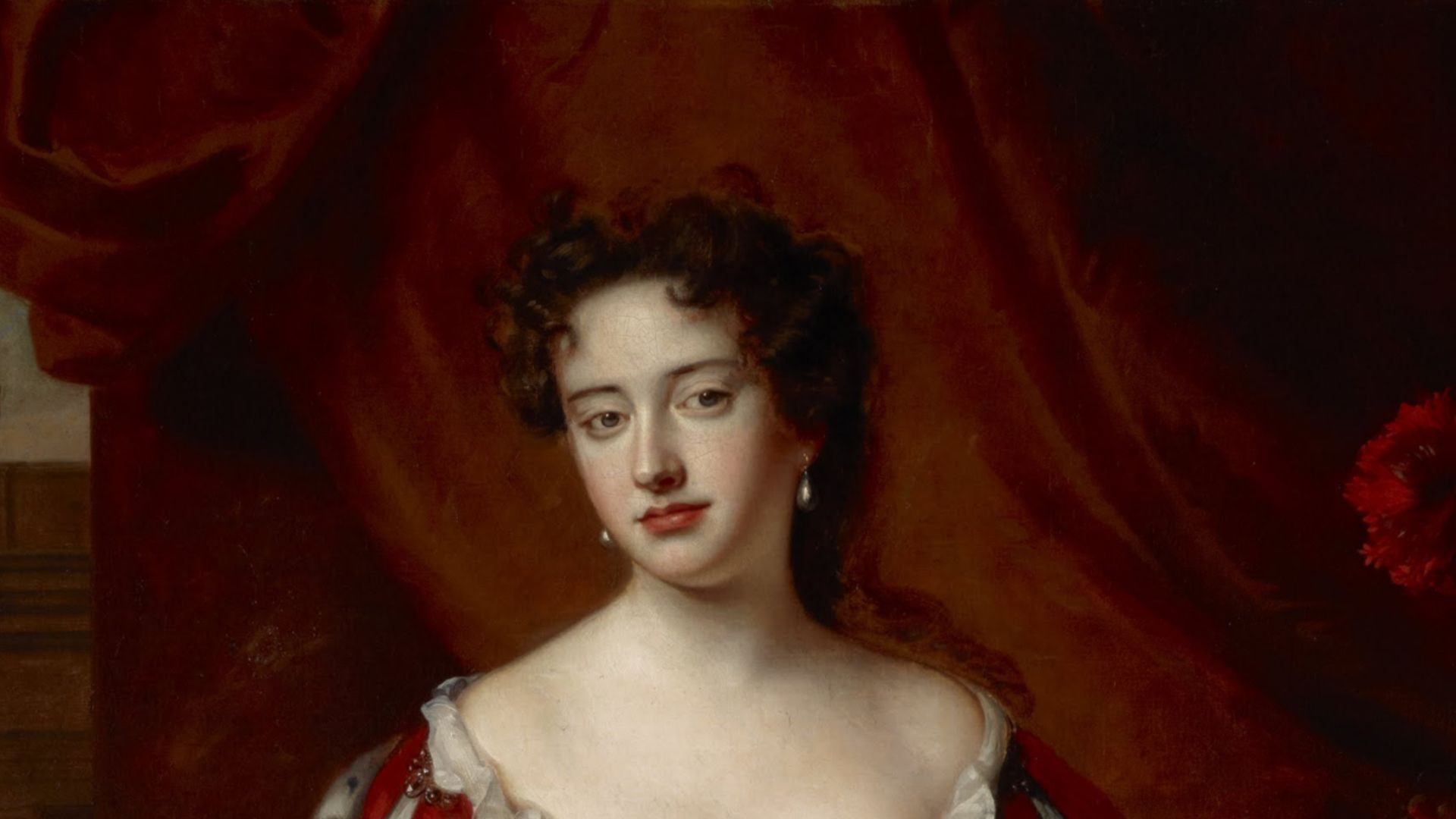 Willem Wissing / Jan van der Vaart, Wikimedia Commons
Willem Wissing / Jan van der Vaart, Wikimedia Commons
Away To France
By 1689, James, Maria, and the young heir were safely across the English Channel in France, where they would remain in exile for the rest of their days. The couple would have one more child, Louisa, born in 1692, and known to their supporters as “The Princess Royal”.
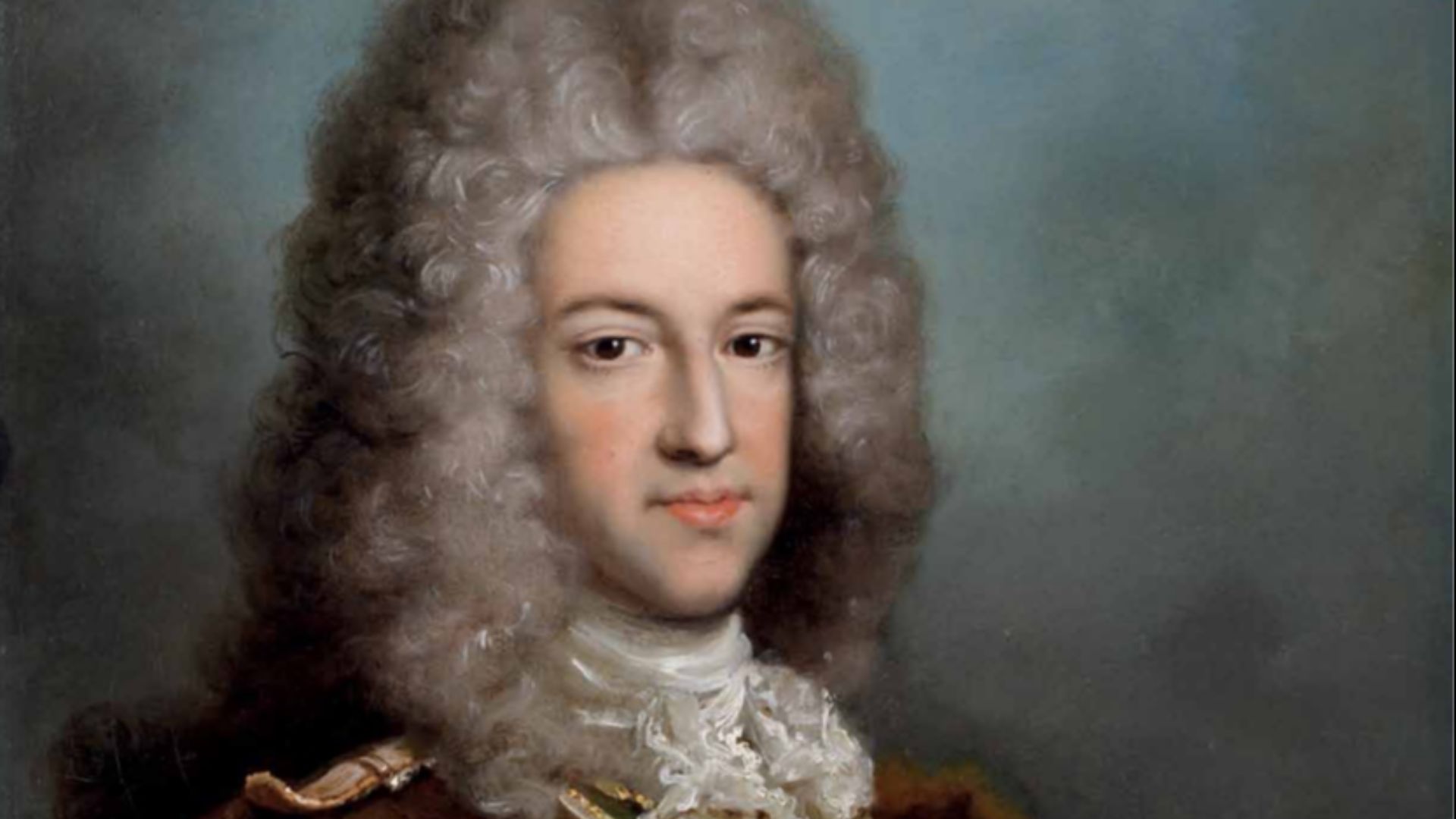 Antonio David, Wikimedia Commons
Antonio David, Wikimedia Commons
The Glorious Revolution
The end of the Catholic rule of Britain was dubbed “the Glorious Revolution”. The Princesses, and much of the citizenry, supported William’s invasion. In the face of what he viewed as a betrayal by his daughters, James II, his wife, and their infant son, fled the kingdom.
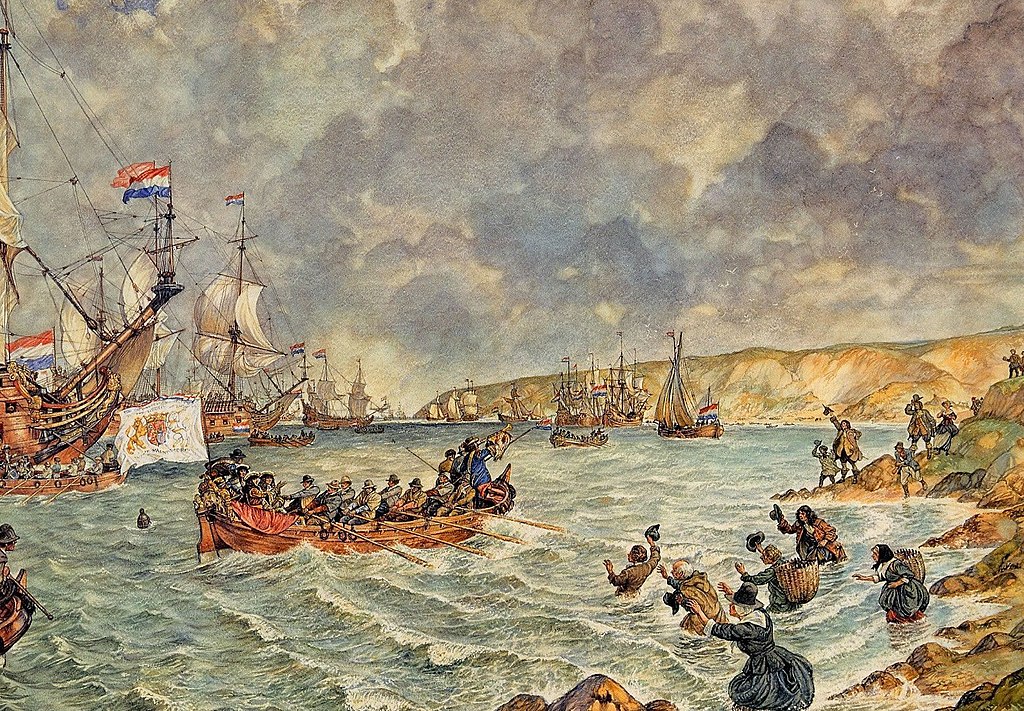 Hoynck van Papendrecht, Wikimedia Commons
Hoynck van Papendrecht, Wikimedia Commons
Was It So Glorious?
The revolution marked a dramatic shift in how power functioned in Britain. The fact that parliament had managed to overthrow a king demonstrated that power had shifted from the monarchy to the politicians, a situation that continues to this very day. But how things got to that point was a bit suspect.
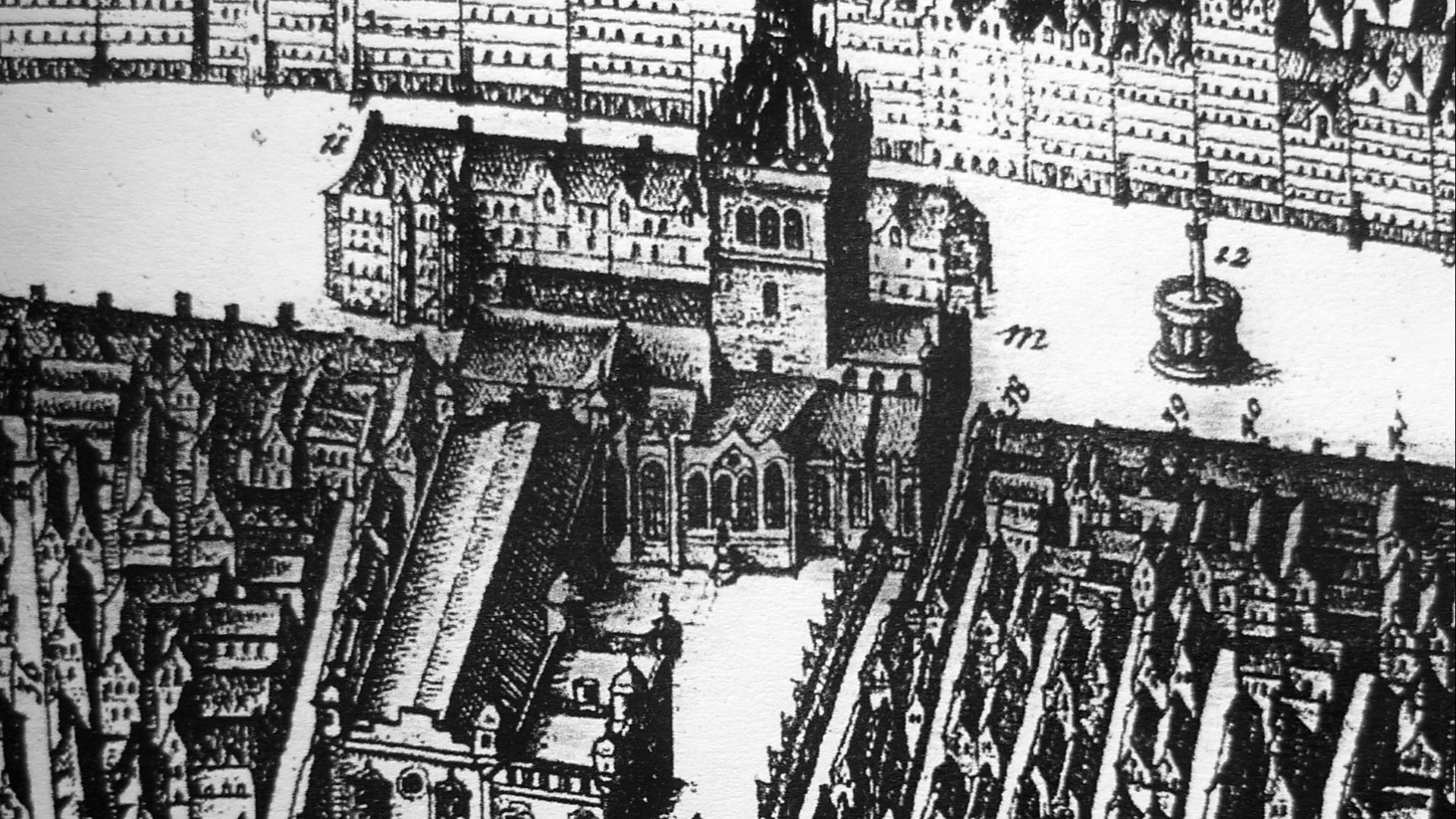 James Gordon of Rothiemay, Wikimedia Commons
James Gordon of Rothiemay, Wikimedia Commons
The End Of The Line
While the Whig parliament took care of the legal side of things, co-monarchs William and Mary assumed the throne of England. The Catholic line had broken. The reign of James II of England was the last time a Catholic would sit on the throne.
 Charles Rochussen, Wikimedia Commons
Charles Rochussen, Wikimedia Commons
A Life In Exile
Though by all accounts the legitimate King of England, James Stuart grew up in France and never reclaimed his birthright. His son, Prince Charles, would lead a failed uprising years later, and the parliament changed the laws so that no Catholic could ascend to the British throne.
 William Mosman, Wikimedia Commons
William Mosman, Wikimedia Commons
The Power Of A Rumor
The next time you hear a rumor and think that no one could possibly believe such a thing, remember the tale of the Glorious Revolution. This spurious tale of a baby in a warming pan was the final straw that broke the camel’s back and changed the way Britain’s government functioned henceforth.
The More Things Change…
Mis- and disinformation are familiar words in modern times, with rumor and conspiracy playing almost as big a role in geopolitics as fact and policy. And while the speed with which such rumors spread is faster today, the warming pan scandal of 1688 shows that using lies to manipulate politics is not a new idea.
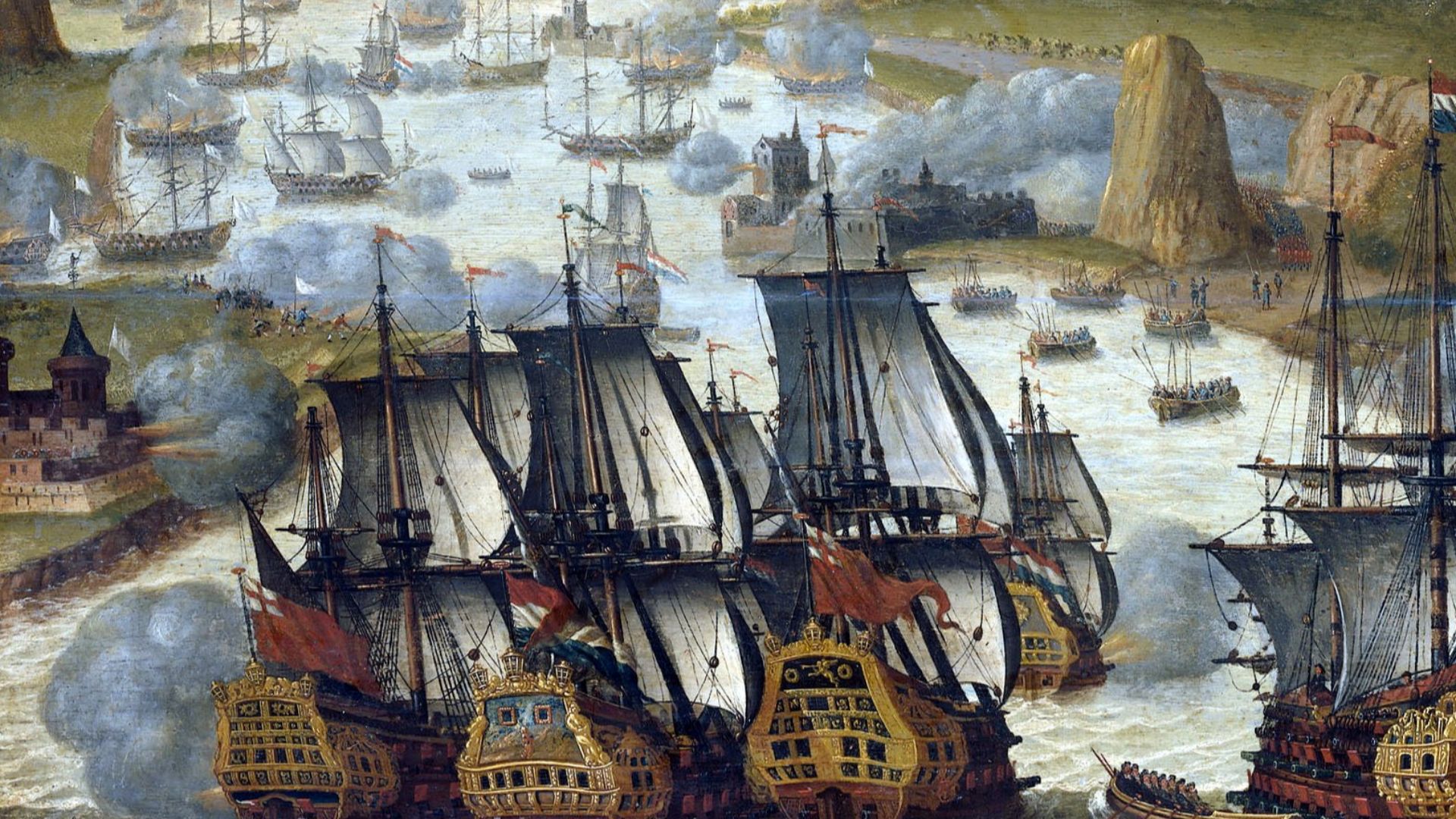 Anonymous (Northern Netherlands), Wikimedia Commons
Anonymous (Northern Netherlands), Wikimedia Commons
You May Also Like:
The First Queen Of Great Britain
Mary II Was England’s Traitor Queen

